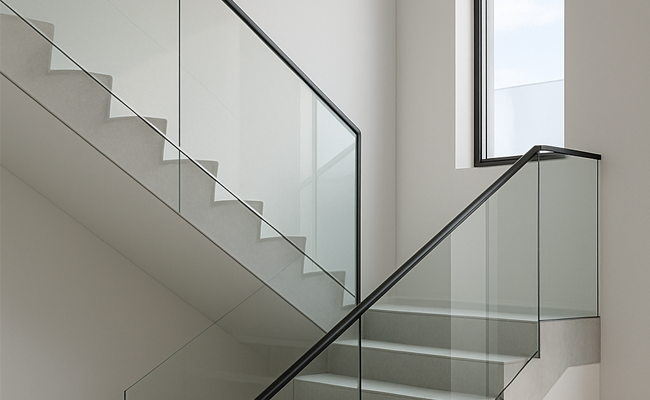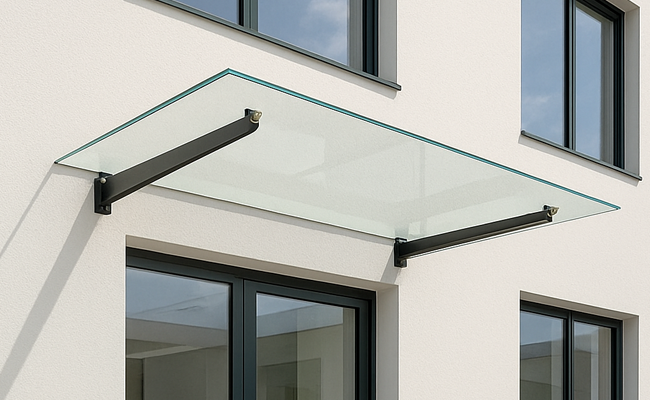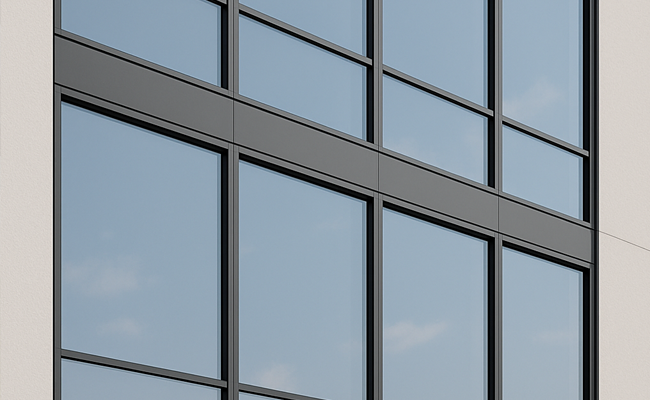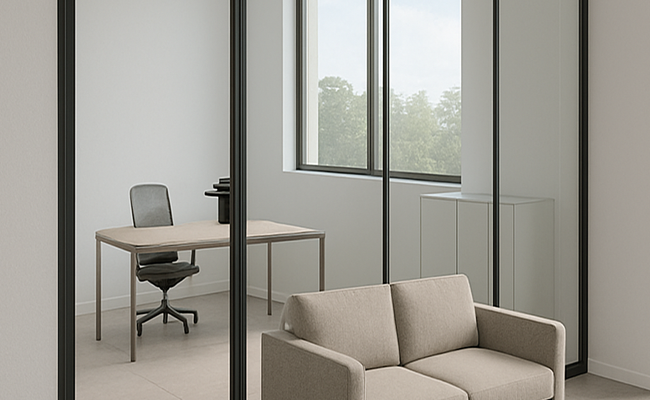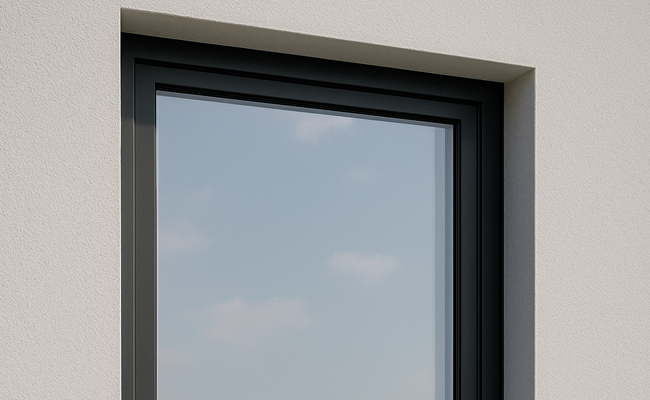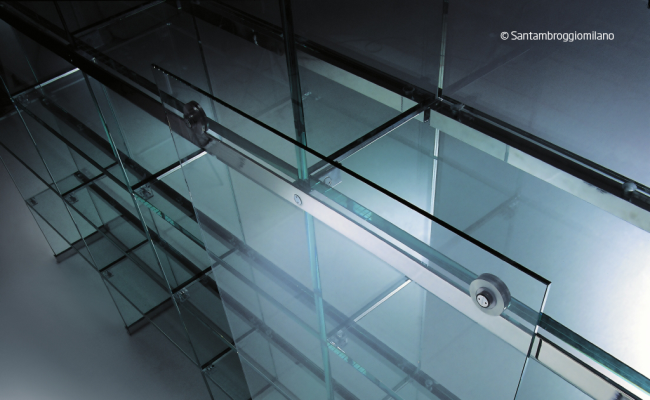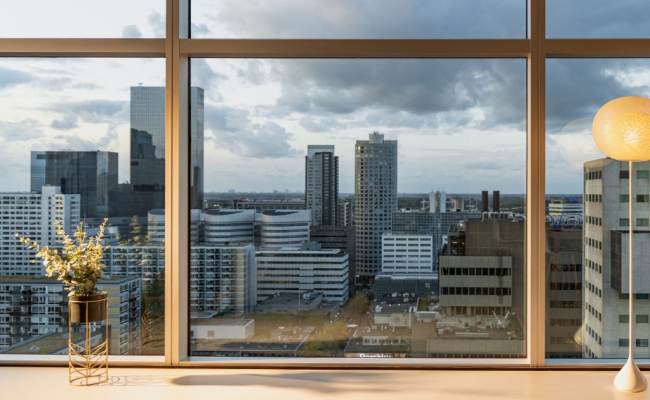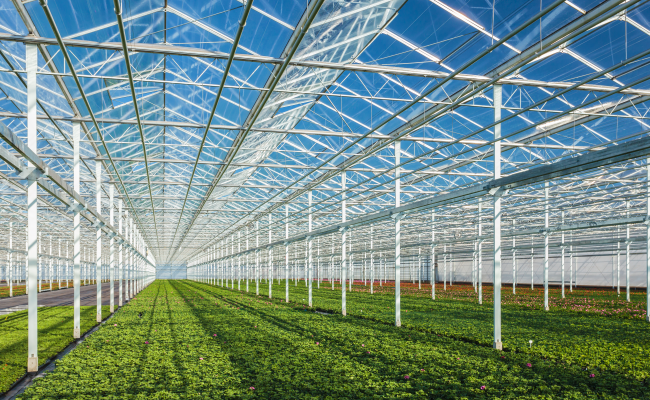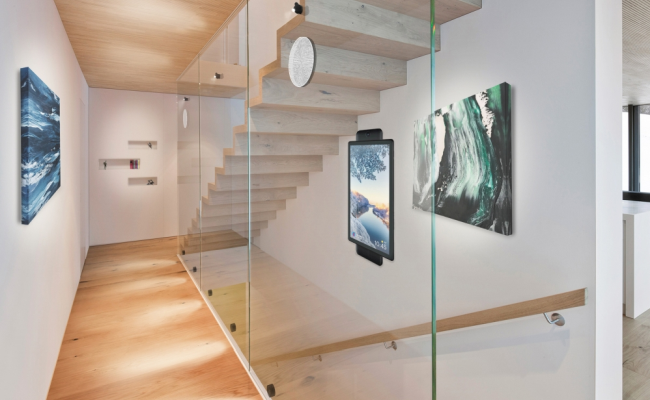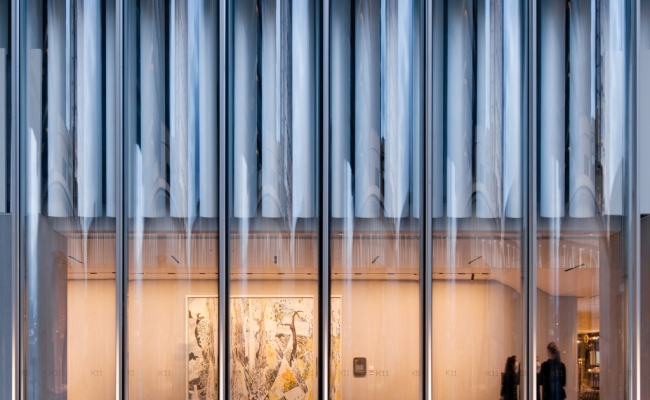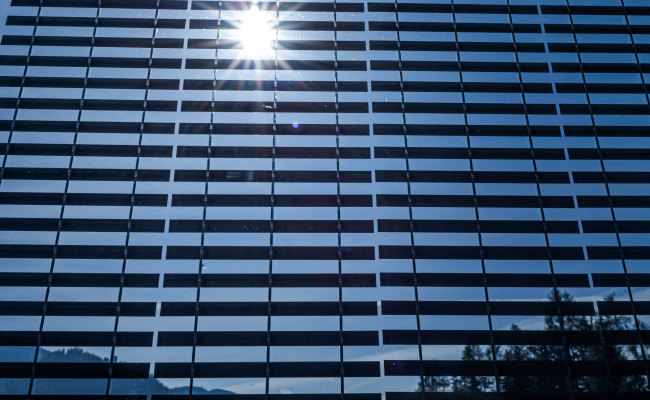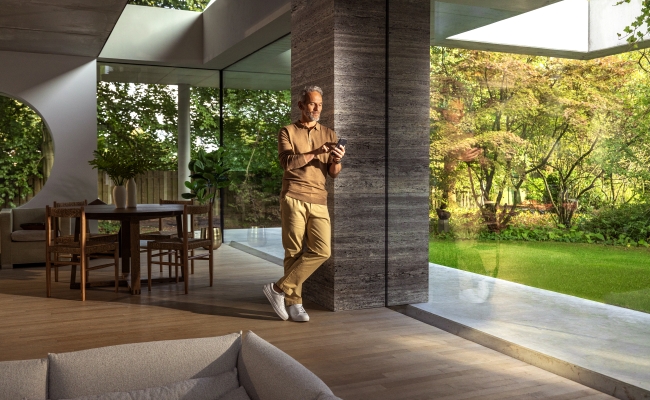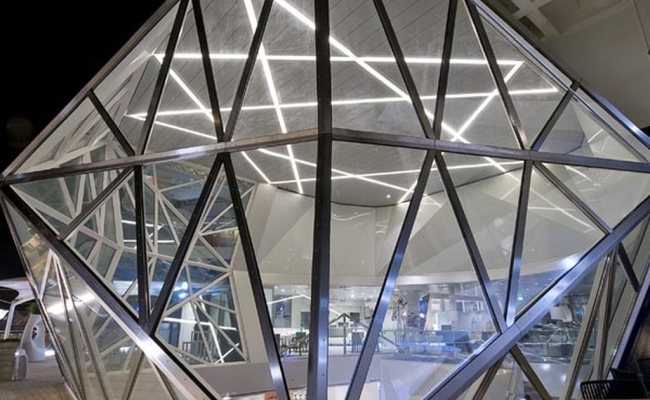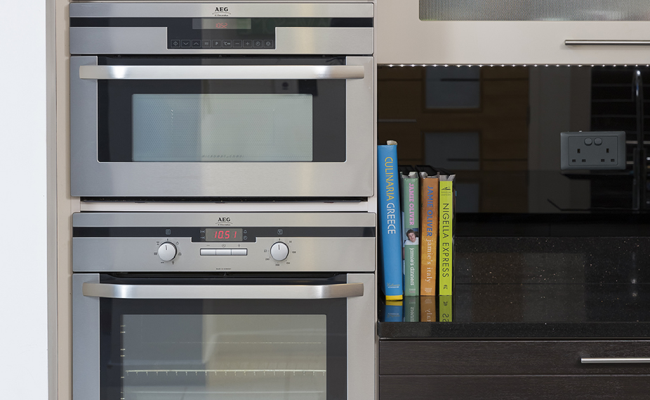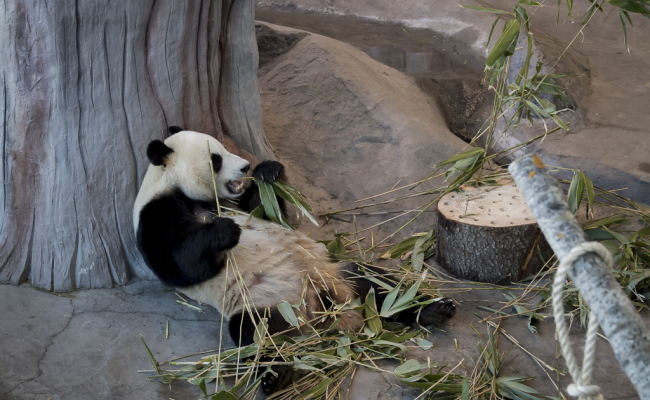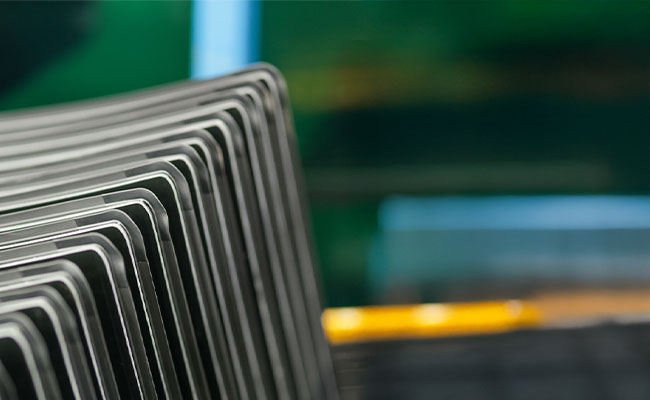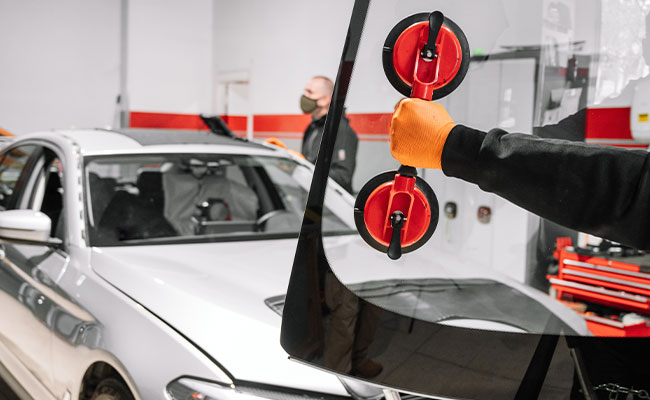Gl@ssary
Absorptance:
the proportion of incident solar radiation absorbed by the glass, expressed as a fraction (see solar properties).
Absorption:
an alternative word for absorptance, expressed as a percentage.
Acid etching:
a process whereby the surface of glass is etched by exposure to a dilute solution of hydrofluoric acid to produce patterns, designs or obscuration – see Information on Pilkington Optifloat™ Opal and on Pilkington Oriel Collection.
Acoustic laminate:
a laminated glass with special interlayers offering enhanced acoustic performance when compared with ordinary laminated glass. See Product Data sheet on Pilkington Acoustic Laminate Pilkington Optiphon™ and Technical Bulletin "Glass and Noise Control".
Acoustic performance:
simply how much noise does a product stop. It is a property of a glass or glazing product which describe its airborne sound insulation, as measured by the reduction or attenuation of sound, at specific frequencies, in decibels (dB), or by sound reduction indexes, such as the weighted sound reduction index (Rw) or the road traffic sound reduction index (Rw + Ctr).
Activ™:
Pilkington Activ™ is the brand name for the world’s first self-cleaning glass. Its unique dual action uses the forces of nature to help keep the glass free from organic dirt, giving you not only the practical benefit of less cleaning, but also clearer, better-looking windows.
A Frame:
a rack or stillage that is A shaped in profile.
Air Mass 1 (AM1):
Direct optical path length of the solar spectrum through the earth’s atmosphere. AM1 corresponds to a solar zenith angle of 0°, whereby the sun is directly overhead. See also relative spectral distribution.
Air Mass 1.5 (AM1.5):
Direct optical path length of the solar spectrum through the earth’s atmosphere. AM1.5 corresponds to a solar zenith angle of 48.2°. See also relative spectral distribution.
Air Mass 2 (AM2):
Direct optical path length of the solar spectrum through the earth’s atmosphere. AM2 corresponds to a solar zenith angle of 60°. See also relative spectral distribution.
Airborne sound insulation:
the correct term for the type of sound insulation given by glass. See also acoustic performance. See Technical Bulletin "Glass and Noise Control".
Air Gap:
an alternative term for cavity in an insulating glass unit filled with dry air. The cavity of an insulating glass unit is more commonly filled with argon gas.
Airspace:
an alternative term for the cavity in an insulating glass unit filled with dry air. The cavity of an insulating glass unit is more commonly filled with argon gas.
Annealed glass :
another term for "ordinary" glass, most commonly used for float glass, but Pilkington Texture Glass and Pilkington Pyroshield™ 2 are also annealed glass products. Glass, which immediately after it has solidified into the required form, while still at a high temperature, is slowly cooled in order to minimise the internal stresses in the glass. The resulting glass can be cut by scoring and snapping, and then processed. It is, in fact, "ordinary" glass as taken from the production line and stored in stock plates. Annealed glass, when broken, gives large fragments with sharp edges, so it is not usually classifiable as safety glass.
Anti-bandit glazing:
a form of security glazing resistant to manual attack, that typically achieves a classification when tested to EN 356. See Product Brochure on Safety/Security Glass.
Anti-condensation glass:
Pilkington Anti-condensation Glass is an on-line, low-e coated glass designed to prevent the onset of external condensation.
Antisun™:
an old brand name for Pilkington Optifloat™ Tint, our tinted float range of solar control glass.
Applied Bevel:
a bevelled piece of glass that is stuck on to another piece of glass or insulating glass unit with a UV curing resin.
Applied Film:
an organic (plastic) film stuck onto glass to give it additional properties, e.g. safety film.
Applied Leading:
strips of lead adhered to both surfaces of a pane of glass to give the appearance of a leaded light.
Arctic™:
Arctic™ is a design of one of the glasses in the Pilkington Texture Glass range (see customer leaflet The Pilkington Decorative Glass Range) of patterned glass. Arctic™ has an obscuration level of 5.
Arctic Blue™:
Arctic Blue™ is a one of High Performance Tints.
Armed attack:
an attack using firearms. For resistance to ballistic attack, glass is typically tested to EN 1063. See Product Brochure on Safety/Security Glass.
Armourclad™:
Pilkington Armourclad™ was an old brand name used for spandrel panels. We now refer to these products as Pilkington Spandrel Glass.
Armourfloat™:
an old brand name used for Pilkington Toughened Safety Glass.
Armourlight™:
an old brand name for Pilkington Heat Strengthened Glass.
Armourplate™:
an old brand name used for Pilkington Toughened Safety Glass.
Armourscreen™:
an old brand name for Pilkington Screen Printed Glass.
Arrissed edge:
an edge finish to the glass where the sharp corners of the edge have been removed.
Arrissing:
a process of edge finishing where the sharp edges of a piece of glass are removed.
Aspect ratio:
the ratio of the long edge of a pane to the short edge.
Attenuation:
the reduction of either sound (see acoustic performance) or electromagnetic radiation (see electromagnetic shielding).
Audioscreen™:
Pilkington Audioscreen™ was an old brand name for Pilkington Acoustic Laminate Pilkington Optiphon™.
Autoclave:
a large pressure vessel that Polyvinylbutyral PVB laminated glass is heated in, to bond the layers of glass and PVB together.
Autumn™:
Pilkington Autumn™ is the brand name for one of the Pilkington Texture Glass range of patterned glass. Pilkington Autumn™ has an obscuration level of 3.
AviSafe™:
Pilkington AviSafe™ is an innovative glass solution, developed to greatly reduce the number of bird collisions with glass. The unique patterned UV enhanced coating disrupts the reflection on the glass, so the bird can see a barrier.
Backing paint:
a form of opacifier, see also spandrel panels, or a protective coating applied to mirrors.
Balustrade:
a term commonly used for a barrier, protecting a difference in adjacent levels, which comes up to about waist height. Sometimes formally described as a free-standing glass protective barrier.
Barrier:
structures designed to either guide the direction of pedestrian traffic or to provide a guarding to the edges of drops. Barriers can take several forms, for example infill panels, balustrades and full-height barriers.
Base glass:
a term used to describe the glass, which is subsequently processed, e.g. acid etching, sand blasting, or coated glass. Also referred to as a glass substrate.
Bead:
see glazing bead.
Bent glass:
an alternative term for curved glass.
Bevelling:
decorative process, of grinding a portion off the edge of the glass, to form a shallow angled face, which is subsequently polished.
Blast resistance:
The ability of a particular type of glass to either withstand explosion pressure waves without breaking or to remain in position if broken. Glass can be tested and classified for blast, or explosion, resistance in accordance with EN 13541.
Body Tinted Float:
see tinted float.
Bomb Blast:
strictly the high pressure wave of gases (the blast wave) that move rapidly away from an explosion. However bomb blast will often refer to the damage caused by the blast wave and by any fragments associated with the bomb. These fragments can be part of the bomb, any container or vehicle it was carried in and any material that was carried along by the blast wave.
Bonded Glazing:
Formerly known as structural sealant glazing, an assembly in which glass products are fixed to the structural seal frame by means of a sealant that has been shown to be capable of withstanding the load actions applied to the glass products of the structural seal frame.
Borosilicate glass:
Glass with increased amounts of Boron. This means that the glass melts at a higher temperature than conventional soda lime silicate glass. Pyran from Schott Glass is an example of a Borosilicate Fire Resistant Glass.
Bow:
a form of distortion of toughened glass or heat strengthened glass. Bow may vary depending on the glass type/thickness, size, aspect ratio and other factors. It is measured with the glass in the vertical plane and supported at quarter points. The maximum deviation from a straight edge is measured on the concave surface.
BR1:
EN1063 classification for bullet resistant glass to withstand .22 Rifle.
BR2:
EN1063 classification for bullet resistant glass to withstand 9 mm Parabellum Handgun.
BR3:
EN1063 classification for bullet resistant glass to withstand .357 Magnum Handgun.
BR4:
EN1063 classification for bullet resistant glass to withstand .44 Magnum Handgun.
BR5:
EN1063 classification for bullet resistant glass to withstand 5.56 mm Rifle.
BR6:
EN1063 classification for bullet resistant glass to withstand 7.62 mm Rifle.
BR7:
EN1063 classification for bullet resistant glass to withstand 7.62 mm Rifle.
Note: There are differences between BR6 and BR7, including the bullet jacket. See also Brochure on Safety/Security Glass.
Brass Plating:
a term sometimes used when a customer buys bulk loads of a product through a merchant, who then arranges for the factory to deliver direct to their customer. The merchant usually does not see the glass involved all they do is raise an invoice.
Break Safely:
see safe breakage.
Brewster’s Fringes:
an effect like a rainbow visible under certain lighting conditions, produced in an insulating glass unit when the two panes of glass are almost exactly parallel to each other.
Brilliant cutting:
the manufacture of a decorative polished V-shaped notch in the surface of the glass. The notch may be straight or curved.
Brise soleil:
a partial shading device, usually above a window on the exterior of the building.
Brocade™:
Pilkington Brocade™ is the brand name for one of the former Pilkington Oriel Collection range of acid etched decorative glass. It was discontinued in 2013.
BS#:
stands for British Standard #. BS 6262 part 4 is a safety glazing standard.
BS EN:
A European Standard that has been adopted as a British Standard, for example BS EN 1096 for coated glass in building.
Bubble:
depending on context this could be:
- a bubble of air trapped between interlayers in a laminated glass, or
- a gas bubble that has become trapped within a piece of glass during manufacture.
Bullet Resistance:
the ability of a particular type of glass to withstand armed attack using a particular type of weapon not just by stopping the bullets, but also in terms of the spall (or splinters) ejected from the opposite face by the impact. classification is explained in EN1063 standard see BR1 – BR6. See also Brochure on Safety/Security Glass.
Burdock™:
Pilkington Burdock™ is the brand name for one of the Pilkington Oriel Collection range of acid etched decorative glass. It has an obscuration level of 3.
Butt joint:
a joint between the edges of adjacent panes, which have no frame, but are filled with adhesive sealant, commonly silicone sealant.
Canopy:
an overhead device to keep rain off and can also be used to provide shading on southerly facing glazing.
Canterbury™:
Pilkington Canterbury™ is the brand name for one of the Pilkington Oriel Collection range of acid etched decorative glass.
Cap:
an abbreviation for end cap.
Capping:
a term used in glazing, depending on context it can mean:
- a glazing compound that has been applied to protect another material, for example a silicone sealant that is applied to protect an intumescent compound from the weather;
- a metal glazing bead in a patent glazing system.
Cassini™:
Pilkington Cassini™ is the brand name of one of two designs introduced to the Pilkington Texture Glass range of patterned glass, with a privacy level of 5 - the highest obscuration available.
Cast-in-place (CIP):
a type of interlayer used in the manufacture of laminated glass, by pouring a liquid resin between two panes of glass and curing it either chemically or by exposure to UV light.
Cathedral:
Competitor textured glass pattern, Pilkington Minster™ should be offered as a substitute.
Cavity:
the gap between the panes of an insulating glass unit also known as the airspace. The cavity of an insulating glass unit is more commonly filled with argon gas.
Ceramic coating:
the enamel finish applied to toughened glass to manufacture Pilkington Spandrel Glass Enamelled
CE Marking:
CE Marking indicates that a product conforms to a European technical specification called a harmonised European Norm (hEN) or a European Technical Assessment. Once it has been demonstrated that the product complies with the requirements of the relevant hEN, then the manufacturer can affix the CE Marking to the product, its packaging or delivery documentation.
Centre pane U value:
Also referred to as Ug-value, this is the thermal transmittance of the central area of the glass, ignoring the edge effects associated with the spacer bar, sealants and frame. In Europe, it is usually calculated in accordance with EN 673. (See also U value)
Chantilly™:
Pilkington Chantilly™ is the brand name for one of the Pilkington Texture Glass range of patterned glass. Pilkington Chantilly™ has an obscuration or privacy level of 2.
Cirque™:
Pilkington Cirque™ is the brand name for one of the Pilkington Oriel Collection range of acid etched decorative glass, with a privacy or obscuration level of 1.
Class A:
see Safety glass.
Class B:
see Safety glass.
Class C:
see Safety glass.
Clear float:
untinted float glass (normal window glass) called Pilkington Optifloat™ Clear.
Coated glass:
a base glass to which an inorganic coating has been applied, either a pyrolytic coating, usually applied on-line (i.e. during the manufacture of the float glass) or a sputtered coating applied off-line to stock sizes or cut sizes.
Cold radiation:
a description of the apparent effect felt when sitting near to a cold window surface, e.g. single glazing in cold weather.
Coloured film:
decorative applied film stuck on to the glass, usually in conjunction with applied leading to give the appearance of a leaded light.
Comfort:
see Thermal comfort.
Comprehensive surface stress:
see Toughened glass.
Condensation:
the formation of water droplets on cold surfaces. Condensation is regularly seen on the room surfaces of single glazing, but its incidence is reduced by the use of insulating glass units and particularly those that contain Low E glass. (See also External condensation.)
Conduction:
one of the methods of heat transfer through glass or through the gas in the cavity of insulating glass units.
Conduction heat gain:
the transfer of heat from outside the building to the inside when the external air temperature is hotter than the internal air temperature.
Conservatory:
a room added to a building that typically comprises of a glazed roof and walls, often incorporating low emissivity and/or solar control glass to optimise all-year-round use. Self-cleaning glass (see Pilkington Activ™) is also popular in conservatory applications, particularly in roofs.
Construction Products Regulation (CPR):
A regulation that sets out the rules for the marketing of construction products through common European technical specifications, supporting the single market in the EU (See also CE Marking).
Containment:
the ability of a glass or glazing product to prevent persons who accidentally fall against it from falling through. (See also Guarding and barriers.)
Convection:
one of the methods of heat transfer by the gas in the cavity of an insulating glass unit.
Cotswold™:
Pilkington Cotswold™ is the brand name for one of the Pilkington Texture Glass range of patterned glass. Pilkington Cotswold™ has an obscuration level of 5.
Critical locations:
those areas of a building, e.g. doors, adjacent to doors, or low level glazing, where glazing is most vulnerable to accidental human impact and which may require the use of safety glass. These areas are defined in national standards such as BS 6262-4, the code of practice for safety related to human impact.
Cullet:
a term used for broken glass that is often mixed with the other raw materials (see Glass). Cullet is recycled in glass manufacturing because it takes 50% less energy to melt it. Other benefits of increased cullet usage include reducing carbon emissions, replacing virgin raw materials, reducing air emissions and diverting waste from landfill.
Curtain slider:
a type of delivery vehicle that has sliding curtains along the sides to protect the load from the weather.
Curtain walling:
a glazing system in which the complete façade is glazed into frames attached to the building structure. The glazing may include both vision areas and spandrel panels.
Curved glass:
glass, which has been heated past its softening point and formed into a curved shape, usually by draping the softened glass over or into a mould. The shaped glass is subsequently cooled slowly to form annealed glass or it may be rapidly chilled to form toughened glass.
Cut sizes:
panes of glass cut to the final size for glazing, sometimes referred to as finished cut sizes.
Data protection:
the electromagnetic shielding of computers either to prevent scanning of the radio waves emitted by computers or to prevent corruption of data by interference from outside radio or radar sources.
DataStop™:
Pilkington DataStop™ is the brand name for a range of laminated glass and insulating glass units that have been specifically designed to give increased electromagnetic shielding for computers and offices.
Daylighting:
Good practice in daylighting design, including the appropriate use of glazing, can enhance the health, well-being, satisfaction and productivity of people in buildings.
dB:
see Decibel.
dBA:
a weighted measure of sound that is designed to stimulate that of our ears. The international standard for this measure is called the 'A' Weighting Curve. Measurements made with this facility are, therefore, termed 'A' weighted decibels or, more concisely, dBA, to discriminate from those made in plain dB, which do not depend directly on human reaction.
Decarbonisation:
the process of significantly reducing or eliminating carbon dioxide and other greenhouse emissions from the atmosphere. A critical objective of the flat glass industry, focus areas in manufacturing include increasing recycled content and using alternatives fuels.
Decibel (dB):
the scale used to measure or describe:
- Loudness of sound, or
- Sound insulation and sound reduction indexes (see acoustic performance), or
- Attenuation of radar and radio waves (see electromagnetic shielding).
Declaration of Performance (DoP):
a document that a manufacturer is required to make available when a construction product is placed on the market in an EU Member State. It can be made available electronically, for example via a website. DoPs for Pilkington products can be downloaded by accessing www.pilkington.com/ce and selecting the appropriate country. (See also CE Marking)
Deep Flemish™:
is the brand name for an old Pilkington patterned glass, which is no longer manufactured. It had an obscuration level of 2.
Deflection:
how much something moves out of true plane when a load is applied. Glass can bend when a load like snow or wind is applied. Deflections can be calculated in advance and the correct glass for the application specified. Many national standards and industry guides provide recommendations for limiting glass deflection.
Desiccant:
a chemical drying agent that dries and helps remove any organic vapours from the air or gas trapped inside the cavity of an insulating glass unit. It is sometimes called a molecular sieve.
Design loads:
The actions applied to buildings which can influence the choice of glass (e.g. type, thickness, etc.). Determined in accordance with standards such as the structural Eurocode series, they can be due to wind, snow, climate, crowds, etc.
Design strength:
The design value of bending strength derived from the characteristic bending strength and used in the determination of load resistance of glass in buildings. It is usually calculated in accordance with standards such as EN 16612.
D.G.U.:
double glazing unit.
Diamond leading:
a style of leading copying a traditional leaded light.
Diffusing:
randomly scattering the incident light while still allowing transmission. Usually applied to the effects on light of acid etching, sand blasting and 3065 white tinted interlayers used in laminated glass. (See also Translucent.)
Diffusion:
see Diffusing.
Digital™:
the brand name for one of the Pilkington Texture Glass range of patterned glass, Pilkington Digital™ has an obscuration or privacy level of 3.
Direct transmittance:
the proportion of a solar radiation, which goes straight through the glass without being absorbed. (See also Solar properties)
Distance pieces:
sections of material used to space the pane of glass away from the upstand of the rebate in a frame, in order that an appropriate face clearance and an appropriate amount of sealant is present between the glass and the frame.
Double glazing:
depending on context:
- term often used for a replacement window,
- is also used for secondary sash glazing,
- and for insulating glass units.
Double glazing unit:
an alternative name for insulating glass units comprising of two panes of glass.
Double window:
a window containing two panes of glass in the same vision area, but which are glazed separately, not formed into an insulating glass unit. It is sometimes described as secondary sash glazing.
Drained and ventilated glazing:
drained glazing where the rebates are deliberately ventilated so that external air circulates around the edge of the glass to assist in keeping the edges dry.
Drained glazing:
a glazing system in which any lodged water is channelled out of the rebates.
Driftwood™:
is the brand name for an old Pilkington patterned glass, which is no longer manufactured. It had an obscuration level of 5.
Drying agent:
another name for desiccant or molecular sieve.
Dual seal system:
the edge seal of a high performance insulating glass unit, which comprises primary seals between the spacer bar and the panes of glass and a secondary seal between two panes outside the spacer bar. Pilkington Insulight™ insulating glass units are made with a dual seal system.
E:
Insert TEN 13501-2 classification for integrity, fire resistant glass.est here
Eclipse™:
Pilkington Eclipse™ is our brand name for a range of hard coated, solar control glasses. Pilkington Eclipse Advantage™ combines medium performance solar control glass with low emissivity.
Edge clearance:
the distance between the edge of the pane and the frame in which it is glazed. The clearance is required to allow for tolerances, avoid contact between the glass and it's framing and, in the case of drained glazing, to give sufficient room for water to drain away.
Edge cover:
edge cover is typically the distance between the edge of the glass and the sightline, where the glass appears from the frame rebate or glazing bead. It is an important consideration in terms of design and installation to ensure an adequate mechanical support, retention of the glass and, in the case of some insulating glass units, to protect the edge sealant from exposure to sunlight.
Edge seal:
the hermetic seal around the edge of an insulating glass unit, designed to limit the rate at which water vapour penetrates into the cavity. The better performing edge seals tent to be dual seal systems. These are used in Pilkington Insulight™ insulating glass units.
Edge work:
any extra work carried out to the edge of a piece of glass. This can be arrissed edge, a flat ground edge or a polished edge. It may be used to refer to bevelling the edge of the glass.
Effective U value:
sometimes called the energy balance value, a measure of the performance of glass as an energy saving wall construction when its ability to let in useful solar heat gains is combined with its capability for thermal insulation as described by the Ug value. It can be calculated using standards such as EN ISO 14438.
EI:
EN 13501-2 classification for Insulation, fire resistant glass.
Electromagnetic attenuation:
see Electromagnetic shielding.
Electromagnetic radiation:
a technical expression for all the wavelengths of electrical or magnetic activity. The full spectrum from cosmic and gamma rays with very short wavelength, through X-rays, UV light (generally described as 280 to 380 nanometre (nm) wavelength), visible spectrum (generally described as 380 to 780) and infra-red, to radio waves with very long wavelength.
Electromagnetic shielding:
the use of a Faraday Cage to reduce or prevent the passage of the longer wavelengths of electromagnetic radiation, usually at the frequencies of radar and radio waves. The electromagnetic attenuation give by the Faraday Cage is measured in decibels. (See also DataStop™)
Emissivity:
the ability of a surface to absorb or emit electromagnetic radiation. In terms of glass, emissivity is only important with respect to long wavelength radiation (in the range 5 to 50 µm) produced as radiated heat by objects at around room temperature. Glass naturally has a high emissivity. However, when made into low emissivity (Low E Glass), the glass surface does not absorb the radiated heat, but reflects it back into the room, enhancing the Ug value of the glazing. Pilkington K Glass™ and Pilkington Optitherm™ are examples of Low Emissivity Glass.
EN#:
European Norm or European standard #. Examples include EN 572 for basic soda lime silicate glass and EN 1096 for coated glass.
Enamel:
a glassy material, which is melted into the surface of the base glass at high temperatures to form a ceramic coating.
Enamelled glass:
glass with enamel applied. Used as Pilkington Spandrel Glass Enamelled.
End cap:
wooden boxes held onto the ends of a pack of glass with metal banding. One of the standard methods of delivery for larger quantities of glass.
energiKare™ Advantage:
A double glazing unit combining Pilkington K Glass™ on Surface 4 (counting from the outside) with Pilkington Optitherm™ S1 Plus ultra low-emissivity glass on Surface 2. With this combination, a very low Ug-value of 0.9 W/m²K can be achieved, approaching the performance of triple glazing.
Energy Balance Value:
also known as the effective U value.
Energy Efficiency Directive (EED):
an EU directive which mandates energy efficiency improvements within the European Union, introducing legally binding measures on Member States to encourage efforts to use energy more efficiently in all stages and sectors of the supply chain.
Energy Performance of Buildings Directive (EPBD):
an EU directive that provides a legal framework to promote energy efficiency in buildings. As buildings are the largest consumers of energy in Europe, this directive is seen as a crucial element in the EU delivering its energy and carbon targets.
Environmental control:
a term used to describe a glass or glazing product which is used for particular effect on the environment inside a building. Often used to mean solar control, but it could also refer to sound insulation, thermal insulation, and the control of lighting levels or a combination of all of these.
Environmental Product Declarations (EPDs):
These provide a means for manufacturers to provide transparent data about the environmental sustainability of their products and for specifiers to make informed purchasing decisions. To access EPDs for a wide range of Pilkington glass products, please click here.
Eurocodes:
The Eurocodes generally refer to the European standards specifying how structural design should be undertaken within the EU. EN 16612 and the CEN/TS 19100 series cover the design and load resistance of glass in buildings.
Everglade™:
Pilkington Everglade™ is the brand name for one of the Pilkington Texture Glass range of patterned glass. Pilkington Everglade™ has an obscuration level of 5.
EW:
EN 13501-2 classification for partial insulation or reduced heat radiation, fire resistant glass.
EXAP:
Abbreviation for extended field of application of test results, usually related to fire resistance or reaction to fire, it is the outcome that predicts a test result on the basis of existing test evidence. EN 15254‑4 is the EXAP for fire-resistant glazing in non-loadbearing walls.
Explosion resistance:
see Blast resistance.
Extension rules:
can be applied in different disciplines, but in the context of acoustic performance of glass, but extension rules are changes that can be applied to a tested configuration without triggering a new acoustic test. EN 12758 provides extension rules for sound insulation of a wide range of glass configurations.
External applications:
applications where glass or glazing products are used in positions exposed to natural weather.
External condensation:
condensation forming on the external face (surface 1) of glazing with very low Ug values. The effect requires particular combinations of high external humidity, average temperatures and exposure of the glass to clear night sky. (see Anti-condensation Glass)
Façade:
the face of a building, or the cladding covering it.
Façade element:
a part of the façade, such as a window or spandrel panel.
Face clearance:
the distance between the glass and the rebate upstand. This is usually filled with a gasket or sealant.
Fanlight:
the glazing immediately above the door.
Faraday Cage:
a complete electrically conducting earthed screen around a volume of space, across which electrical fields, including electromagnetic radiation, cannot pass. In terms of data protection, this requires all the surfaces of a room to contain a metal mesh or be made from electrically conducting materials.
Film:
see applied film.
Fin:
an alternative term for glass mullion.
Fin box:
the glazing system used at the ends of glass mullions to retain them.
Fire barrier:
an element of construction, such as a wall, partition or glazed screen, which gives an appropriate level of fire resistance.
Fire performance:
the length of time an element of construction, such as a wall, partition or glazed screen, continues to give fire resistance when tested under simulated fire conditions according to BS 476: Part 20 or EN 1363-1.
Fire propagation:
see reaction to fire. The test method is detailed in BS 476-6, although guidance is for classification to EN 13501-1 and associated test methods.
Fire protection:
the action of a fire barrier in containing a fire.
Fire resistance:
the ability of an element of construction, such as a wall, partition or glazed screen, to maintain integrity and / or insulation when tested under simulated fire conditions according to BS 476: Part 20 or EN 1363-1.
Fire resistant glass:
a glass that has undergone an initial type test (ITT) and been classified to EN 13501-2. Once classified, a fire-resistant glass needs to be glazed within a glass that in an appropriate glazing system, which enables allows the glazed screen/door to achieve fire resistance of 30 minutes or more. The fire resistant glass may be a non-insulating glass, i.e. it satisfies only the integrity requirements of the relevant standard BS 476 for the time recorded during the test, or it may be fully insulating glass, i.e. it satisfies both the integrity and insulation requirements of the relevant standard BS 476 for the time recorded during the test.
Fire safety:
see Fire protection.
Fired-on transfer:
an applied transfer containing ceramic material or enamel, which is melted into the glass surface at high temperature.
Fixing:
depending on the context this may mean either:
- the method of retaining the glass in position on the building, or
- the action of installing the glass (glazing it).
Flat bed:
a type of lorry, which has a flat open area to stand the load on. This sort of vehicle might be used for delivering end caps or stillages.
Flat ground edge:
a glass edge, which has been completely flattened by a grinding machine, after which the sharp corners are arrissed. The surface appearance is similar to sand blasting.
Flemish™:
Pilkington Flemish™ is the brand name for one of the Pilkington Texture Glass range of patterned glass. Pilkington Flemish™ has an obscuration level of 1.
Flexible compound:
a type of glazing material or sealant, which remains permanently elastic, such as polysulphide or silicone sealant.
Float glass:
glass, which has been manufactured by floating the molten glass on a bed of molten tin until it sets, producing a product with surfaces which are flat and parallel. Pilkington invented this process in the 1950s. The first product became commercially available in 1959.
Florielle™:
Pilkington Florielle™ is the brand name for one of the Pilkington Texture Glass range of patterned glass. Pilkington Florielle™ has an obscuration or privacy level of 4.
Flush glazing:
glazing which has no fixings or parts of the glazing system protruding beyond the outer surface (surface 1) of the glass.
Floatliner:
specially adapted lorry for carrying Jumbo sheets of glass on a stillage.
Fragments:
pieces of broken glass.
Frail:
a rack or frame for supporting or securing glass to. They are often found inside glass delivery vehicles or can be mounted outside the vehicle when they are known as a side frail.
Fractography:
fractography is the study of the fracture surfaces of materials. By inspecting or analysing the fracture of origin of a broken glass, it is possible to determine the cause of failure and help find solutions.
Framed:
supported by a frame along the full length of an edge. Typical descriptions of glazing systems would be 4 edge framed or 2 edge framed.
Frameless:
nor supported by a frame on any of the edges. The alternative to framing is by using bolted connections, which could be described as structural glass. The Pilkington Planar™ range of products is an example of this type of system.
Framing system:
the type of material and the design of the frame supporting the glass. (See also glazing system).
Free path:
the distance, which a person can move directly towards a barrier. This is used as a measure of how much energy can be developed by accidental impact in order to determine the appropriate containment level for glass in the barrier.
Free standing glass protective barrier:
a balustrade in which the glass performs all the mechanical functions. There are no posts or balusters; the glass is cantilevered from the floor and has a continuous handrail mounted on the top edge.
Frequency:
the rate of vibration of a sound wave in Hz (Hertz), also know as the pitch, or the rate of vibration of electromagnetic radiation, particular radio waves, usually in MHz (Mega Hertz).
Frit:
depending on the context can be:
- a term used in float glass manufacturing for the raw materials fed into the furnace,
- an alternative name for enamel,
- sometimes also used to describe screen printed glass patterns.
Fritted:
glass that has had a screen printed glass pattern applied.
g value:
the total amount of the sun’s energy that passes through the glass, comprising the direct transmittance and the absorbed part that is re-radiated into the building. It can be referred to by other terms, for example, solar factor, total solar energy transmittance and, in North America, Solar Heat Gain Coefficient. In Europe, g value is determined in accordance with EN 410.
Galleria™:
Pilkington Galleria™ is our brand name for a rolled glass, which is designed for picture framing. The rolled surface diffuses the reflections from the surface of the glass and so enhances the visibility of the picture.
Gaskets:
solid, preformed glazing materials used to separate glass from other parts of the fixing or frame.
Georgian Bar:
a grid of bars fixed inside an insulating glass unit in order to make it appear from a distance as though the insulating glass unit is composed of smaller panes. Bars are usually white, though Gold and other colours are available.
Georgian Wired:
the old generic name for the Pilkington Pyroshield™ 2 range, see also Pyroshield™ 2 and Pilkington Texture Glass Wired.
Georgian Wired Cast:
the old generic name for Pilkington Pyroshield™ 2 Texture.
Georgian Wired Polished:
the old generic name for Pilkington Pyroshield™ 2 Safety Clear.
Glare:
excessive illumination or excessive contrast between lit and unlit areas, which causes difficulty with vision.
Glare reduction:
the ability to reduce glare problems, either by reducing the overall illumination or by diffusing direct light or a combination of both.
Glass:
Glass is a liquid that has cooled to a rigid state without crystallising. It is sometimes described as a supercooled liquid, which it is not. A supercooled liquid is still a liquid at a temperature below that at which is would normally solidify. Glass is actually a solid with an amorphous random or non-crystalline structure. The use of the term supercooled liquid suggests the idea of flow, but in fact glass is too rigid to flow at normal temperatures however long a force is applied to it. Glass consists of a network of silicon-oxygen-silicon bonds. These are randomly modified by the presence of calcium and sodium. This arrangement is completely random as it would be a liquid, it is not orderly or regular like the molecules in a crystal of sugar or ice. Because of this random network glass is non-ductile (it cannot be beaten or worked like say copper) and it is this that sets it apart from most other materials. The raw materials we use to make glass are Sand (SiO2), Soda Ash (Na2CO3), Limestone (CaCO3), Dolomite (MgCa(CO3)2) and Salt Cake (Na2CO3). We like to mix as much clean cullet (recycled glass) as we can with these raw materials because we use 50% less energy to melt cullet than we do raw materials.
Glass fin:
another name for a glass mullion.
Glass mullion:
a mullion support for glass panes made entirely from glass or from glass beams splice jointed with metal connectors. Usually fixed at a 90° angle as a brace and support. Also known as a fin.
Glazing:
depending on the context it is either:
the complete element of construction comprising the glass, the glazing materials and the fixing or frame, or
the glass or glass product itself, or
the act of installing the glass or glass product.
Glazing attenuation:
see attenuation.
Glazing bead:
the common mechanism used to retain glass in a frame.
Glazing compound:
a glazing material, which is soft and pliable, such as putty or silicone sealant and can be used as a gap filler.
Glazing factors:
another term for radiometric properties, i.e. solar properties and optical properties.
Glazing fin:
another name for a glass mullion.
Glazing materials:
the gaskets, glazing tapes, glazing compounds, bushes, sealants and other items required for the purpose of glazing a glass product.
Glazing platform:
the horizontal leg of the rebate in a frame, upon which the glass sits (on setting blocks) when it is glazed.
Glazing seal:
another term for glazing compound or sealant.
Glazing spacer:
a small separator placed between the glass and frame. See also location blocks and setting blocks.
Glazing system:
the frame and the design or method of fixing the glass into the frame.
Global Warming Potential (GWP):
An index to measure how much infrared thermal radiation a greenhouse gas would absorb over a given time frame, after it has been added or emitted to the atmosphere. Embodied carbon, or more accurately the impact on GWP, of a construction product is the greenhouse gas emissions (and removals) associated with materials and construction processes throughout the life cycle of a building. Measured in kg CO2 equivalent (kg CO2 eq), this value is reported in an Environmental Product Declaration (EPD).
Gothic:
Competitor textured glass pattern, Pilkington Warwick™ should be offered as a substitute.
Guarding:
the prevention of persons falling, by means of barriers and balustrades. Any glass glazed into or forming such a barrier or balustrade is required to give containment.
G.W.C.:
stands for Georgian Wired Cast, the generic name for Pilkington Pyroshield™ 2 Texture.
G.W.P.P.:
stands for Georgian Wired Polished Plate, the generic name for Pilkington Pyroshield™ 2 Safety Clear.
Hand-ball:
a term for loading or unloading glass from a vehicle by hand.
Handling:
all the activities involved in transferring the glass from factory to the site and into position in the building ready for glazing.
Hard-coating:
a term for a coating, which is durable, i.e. resistant to abrasion. It is a term usually applied to pyrolitic coatings. Pilkington K Glass™ is a typical example of a hard-coated glass.
Hazardous areas:
an alternative term for critical locations.
Haze:
particularly important in some applications, haze relates to the amount of scattering of light through a glass. It is defined in ASTM D 1003 as that percentage of light which in passing through the specimen deviates from the incident beam greater than 2.5 degrees on average.
Heat comfort:
low-carbon, infrared heating panels which can help to decarbonise homes and other buildings. They are powered by NSG TEC™ glass with an electrically conductive coating.
Heat gain:
see Solar heat gain.
Heat soaked toughened glass:
toughened glass, which has been heated for a period of time (after the glass has been toughened), at moderately high temperatures to reduce the possibility of spontaneous fractures in service. Heat soaking is recommended where toughened glass is specified for use in roofs, structural glazing and some commercial contract applications. In Europe, heat soaked thermally toughened soda lime silicate safety glass is defined in EN 14179-1.
Heat strengthened glass:
glass which has been heated past its softening point and chilled rapidly to increase its strength and make it thermally safe, but which breaks like annealed glass.
Heat transfer coefficient:
a measure of the rate at which heat can cross a boundary or surface (whether it is by conduction, convection or radiation). The heat transfer coefficients at the outermost and innermost surfaces of an insulating glass unit, as well as the heat transfer coefficient across the cavity, are required to calculate the Ug value of the insulating glass unit.
Hermetic seal:
an edge seal, which is designed to prevent transmission of gas. The edge seal of an insulating glass unit is a hermetic seal to minimise the rate at which water vapour can penetrate into the cavity.
Hi-ab:
a lorry with its own crane, which is used, for delivering stillages or end caps to customers who don't have a crane.
High Performance:
See Suncool™
Horticultural applications:
for horticultural applications, Pilkington Botanical™ comprises a wide range of solutions dedicated to maximising the efficient growth of crops under glass, including Pilkington HortiGrow™, Pilkington HortiHaze™ and Pilkington HortiClean™.
Hot box:
a device, which is used to measure the Ug value of insulating glass units or the overall U value of windows, including the frame.
Hot plate:
apparatus used to derive the U value from the surface-to-surface thermal resistance determined by measurements, often for smaller sample sizes than a hot box. In Europe, the U value of glass can be determined by hot plate in accordance with EN 674, particularly for products for which calculations are not appropriate.
Horizontally toughened glass:
glass, which has been toughened in the horizontal position supported on rollers. Most toughened glass is produced by this method including Pilkington Toughened Safety Glass.
Although the glass is kept moving during the process, when it is soft it tends to sag between the rollers. The final product shows traces of this sagging as a phenomenon called roller wave, which may manifest itself as a regular distortion of images reflected in the glass surface.
HP:
high performance, usually referring to glass that provides solar control and thermal insulation glass with a high selectivity, see Suncool™.
Hydrofluoric Acid:
this is the acid used in acid etching. It is the only acid that will attack glass and has to be stored in special plastic containers. It is also extremely hazardous to human beings.
I.G.U.:
Insulating Glass Unit.
Impact performance:
the impact resistance of a safety glass when tested according to EN 12600. See also brochure Safety/Security Glass.
Impact resistance:
the classification according to EN 12600. Example classifications include 1(C)1 for thick toughened glass and 1(B)1 for laminated glass with a PVB interlayer of 0.76 mm or greater. See also brochure Safety/Security Glass.
Impact resistant:
a euphemism for being a safety glass.
Impact safety:
an alternative term to impact resistance.
Inclined glazing:
glazing which is generally either horizontal or sloping up to 75° from the horizontal. Glazing within 15° of vertical is generally defined as vertical glazing.
Incombustible:
an alternative word for non-combustible.
Infill panel:
depending on the context, this could mean:
- an alternative term for spandrel panel, or
- a panel underneath the handrail in a barrier.
Infinity mirror:
an infinity mirror is constructed typically with two or more mirrors positioned parallel or nearly parallel to each other. This construction creates a series of increasingly smaller reflections that seemingly retreat to what appears to be infinity.
The front mirror is usually a 'one-way' mirror or surveillance glass, for example Pilkington Mirropane™ or Pilkington Mirropane™ Chrome Spy, and the rear mirror is usually a conventional mirror such as Pilkington Optimirror™. When constructing an infinity mirror, placing the mirrors parallel causes them to bounce the light endlessly that’s caught between them.
Infinity mirrors also typically incorporate a set of LED lights or other point-source lighting. The lighting is placed around the edges of the fully reflective mirror, and then the one-way/surveillance mirror is placed parallel close in front of it. When the viewer peers into the first mirror, the lights appear to fade into infinity. This will generate what looks like a long tunnel of lights.
Inner glass:
see Inner pane.
Inner leaf:
see Inner pane.
Inner pane:
the pane on the room side of an insulating glass unit or double window.
Installation:
depending on the context this is either:
- the act of glazing, or
- the finished glazing.
Insulated panel:
a spandrel panel with insulation in the form of organic foam or mineral wool attached to the rear face to lower the U value.
Insulating glass:
a fire-resistant glass, which gives both integrity and insulation for a specific period of time greater than 30 minutes. The Pilkington Pyrostop® range of products is insulating glass. Do not confuse insulating glass with insulating glass units.
Insulating glass unit (or I.G.U.):
an assembly consisting of at least two panes of glass, separated by one or more spacers, hermetically sealed along the periphery, mechanically stable and durable. The European standard EN 1279 (all parts) covers the requirements for insulating glass units. The cavity is typically filled with a gas such as argon for thermal insulation. An insulating glass unit does NOT normally have any fire resistance properties unless it incorporates at least one pane of fire-resistant glass and is glazed into an appropriate fire tested system.
Insulation:
depending on the context, this may mean either:
- the material applied to the back of spandrel panels to increase the thermal insulation of the panels, or
- an alternative word for thermal insulation, or
- the length of time that a construction can give fire resistance in relation to the passage of heat, as defined in BS 476: Part 20 or EN 1363-1.
Insulight™:
Pilkington Insulight™ is the brand name for high quality, high performance, dual sealed, insulating glass units, which are only produced by NSG Group.
Integrity:
depending on the context, this may mean:
- the ability of the glass to hold together after fracture, or
- the length of time that a construction can give fire resistance in relation to the passage of flames and smoke as defined in BS 476: Part 20 or EN 1363-1.
Integrity only glass:
another term for non-insulating glass, see also fire resistance and integrity.
Interlayer:
the material used to separate and bond the plies of glass in laminated glass. There are different types of interlayers available, including polyvinylbutyral (PVB), ethylvinylacetate (EVA), ionomer, cast-in-place or intumescent.
Internal applications:
applications where the glass or glazing products are not exposed to natural weather.
Interstitial condensation:
literally means condensation occurring in narrow gaps, cracks or crevices. It is usually found where condensation occurs inside porous structures such as walls.
Intumescent:
capable of expanding. In terms of glass and glazing, intumescent means specifically that the material expands with heat.This term is applied to glazing materials as well as the interlayers of Pilkington Pyrostop® and Pilkington Pyrodur®.
Intumescent interlayer:
an interlayer which intumesces in fire conditions, not only holding the laminated glass together, but also creating an effective barrier to smoke, flames and heat.
ISO:
International Standards Organisation (ISO) responsible for developing and maintaining International Standards. Examples of ISO standards to which glass manufacturers typically comply include ISO 9001 for quality management systems and ISO 14001 for environmental management systems.
Jumbo:
The largest size of glass we supply e.g. 6000 mm x 3210 mm. Usually delivered in 20 tonne loads on a special glass-carrying vehicle called a floatliner.
K (Document K):
In England, Building Regulations Approved Document K covers protection from falling, collision and impact. When glazing is used as guarding for stairs, parapets or as balustrades it must be capable of withstanding the loadings and satisfy minimum height requirements. For more information on Approved Document K, please click here.
Kappafloat™:
is the old name for our first off-line coated, low emissivity glass. It is now called Pilkington Optitherm™.
K Glass™:
Pilkington K Glass™ is the brand name for our pyrolitic coated low emissivity glass. See Pilkington K Glass™ product page.
K Glass™ A:
Pilkington K Glass™ A is the brand name for the most recently introduced hard coat low-e option that achieves higher Window Energy Ratings than the original Pilkington K Glass™ (dependent on frame type). See Pilkington K Glass™ A product page.
K Glass™ N:
Pilkington K Glass™ N is the new brand name for our pyrolitic coated low emissivity glass. See Pilkington K Glass™ N product page.
K Glass™ S:
Pilkington K Glass™ S is the brand name for a single stock, off-line coated low-e glass which can be used in annealed form or toughened, resulting in a product with the same thermal performance and neutral appearance. See Pilkington K Glass™ S product page.
KIC:
Fracture toughness, or critical stress intensity factor, is a measure of the resistance to crack propagation.
K value:
In some parts of the world, thermal transmittance is referred to as the K value. The units of K value are usually W/m2K, although it is sometimes quoted in kcal/hrm2°C. The latter unit is slightly larger, which may make K values appear smaller. To convert from kcal/hrm2°C to W/m2K, multiply by 1.163.The symbol ‘k’ can also refer to thermal conductivity which can also be denoted by ‘λ’.
L (Document L):
in England, Building Regulations Approved Document L addresses the conservation of fuel and power in buildings. Windows with low U values (incorporating Low-E glass) is typically required to satisfy the regulatory requirements.
Laminate:
another term for laminated glass.
Laminated glass:
laminated glass is produced by combining layers of glass with plastic (e.g. PVB, EVA, etc.) or resin (CIP) interlayers to form sandwiches of material with specific design properties.
Laminated toughened glass:
laminated glass made with all the panes in toughened glass. This is often specified for overhead and structural glazing applications.
Laurel™:
Pilkington Laurel™ is the brand name for one of the Pilkington Oriel Collection range of acid etched decorative glass. It has a privacy level of 2.
Lead cames:
the lead used in traditional leaded lights to hold the individual small panes of glass in position. The lead cames are relatively flexible, so large leaded lights may need additional support from cross bars attached at intervals to the lead cames.
Leaded glass:
an alternative name for leaded lights.
Leaded light:
glazing which is formed either:
- in the traditional manner by using lead cames to fix small panes of glass, or
- by sticking applied leading on to the surface of a single pane.
Lead run off:
lead carbonate can leach from lead flashings or applied decorative lead, in rainwater and be deposited as a white stain onto glass. This effect can occur on any glass, but it tends to be more noticeable on self-cleaning glass such as Pilkington Activ™. It is recommended that any lead used where there is a risk of rainwater run off should be treated with either patination oil or a similar product to reduce the risk of leaching.
LEED:
developed by the US Green Building Council, LEED (Leadership in Energy and Environmental Design) is one of the most widely-recognised architectural standards in green or sustainable building design. Building products such as glass cannot be certified, but they can play an important role in achieving LEED credits. Pilkington glass products can contribute towards a building achieving LEED certification.
Lehr:
terminology used in float glass manufacturing. The annealing Lehr is the cooling area on a float line. Glass leaves the float tank and passes for several hundred yards down the Lehr where it is cooled in a carefully controlled way to prevent stresses being set up in the glass. See also Annealed glass.
L.E.S.:
lehr end size. Sheets of glass that are the width of the annealing lehr. Normally 3210 mm by another dimension.
Light diffusion:
see Diffusing.
Light pollution (or light spill):
light pollution or light spill can excessive, misdirected, or obtrusive artificial light, often emitted from buildings. If there is too much light pollution, it can wash out starlight in the night sky, interfere with astronomical research and disrupts ecosystems.
Reducing light spill from properties can be an important ecological consideration for some projects, for example where there is a requirement to mitigate the impact of artificial lighting on bats. The Bat Conservation Trust advises that low transmission glass may be a suitable option in achieving reduced illuminance targets. Depending on the height of the building and the position of the windows, and therefore predicted light spill, low transmission glass may not be required on all storeys. For projects where this is critical element of the design, a suitably-qualified lighting professional may be able to provide guidance.
Light reflectance:
the proportion of the visible spectrum, which is reflected by the glass, usually expressed as a fraction or percentage. (See Optical properties)
Light reflection:
an alternative term for light reflectance, usually expressed as a percentage.
Light shelf:
a reflective device (possibly a partial mirror), placed in a position near the upper edge of a window, which redirects light from the sun and sky onto the ceiling or towards the back of the room, in order to improve the natural illumination within the room.
Light transmittance:
the proportion of the visible spectrum, which is transmitted by the glass, usually expressed as a fraction or percentage. (See Optical properties)
Light transmission:
an alternative term for visible light transmittance, typically expressed as a percentage.
Lighting conditions:
the level of illumination, specifically the illumination on the public side and the private side in relation to one-way vision effects.
Linear™:
Pilkington Linear™ is the brand name for one of the Pilkington Oriel Collection range of acid etched decorative glass. It has a privacy level of 2.
Linkon™:
withdrawn in 2001, Pilkington Linkon™ is the brand name for one of the former designs of Pilkington Texture Glass range of patterned glass. Pilkington Linkon™ had an obscuration level of 4.
Linseed oil putty:
the traditional glazing compound for single glazed timber windows. Linseed oil putty is NOT suitable for insulating glass units or laminated glass.
Location blocks:
small separators placed between the frame and the edge of the glass to maintain the edge clearance between the glass and the frame. The separators are called location blocks when positioned on the vertical and top edges of the pane. At the bottom edge their equivalents are setting blocks. Location blocks are not required in every instance, but are commonly used in opening windows, where there may be a tendency for the glass to move in the frame.
Long wavelength energy:
an alternative term for long wavelength radiation.
Long wavelength radiation:
that part of the electromagnetic spectrum (i.e. from 5 to 50 microns wavelength), which is produced by objects at around room temperatures. Glass is opaque to this radiation so short wave radiation from the sun is trapped by the glass, giving the greenhouse effect. It is possible to design coatings which are transparent to visible light, but which are highly reflective, i.e. have a low emissivity, to long wavelength radiation. Glass with such a coating is called Low E Glass, Pilkington K Glass™ and Pilkington Optitherm™ are examples.
Long wave shading coefficient:
see Shading coefficients.
Low carbon glass:
manufactured using a combination of alternative fuel, high recycled glass content and 100% renewable electricity, Pilkington Mirai™ has a low Global Warming Potential (GWP) of 5 kg CO₂ per m2. This is 52% less embodied carbon compared to our standard 4 mm Pilkington Optifloat™ Clear (European baseline).
Low E Glass:
see Low emissivity glass.
Low emissivity glass:
simply a glass that keeps more heat in the building than ordinary glass. Glass is coated with a special metallic coating. A low emissivity glass has typically an emissivity less than 0.2 in the long wavelength radiation part of electromagnetic radiation, with products such as Pilkington Optitherm™ S1 offering an ultra low emissivity of 0.01. Uncoated glass has an emissivity of around 0.9. by comparison. The purpose of Low E glass is to reduce the radiation component of heat transfer across the cavity of an insulating glass unit. Since radiation is a significant component of the heat transfer across a cavity, insulating glass units incorporating Low E glass have much improved thermal insulation properties when compared to units without Low E glass (30% better insulation). Building Regulations across Europe have been tightened up in recent years to make the use of Low E glass mandatory in double, and sometimes, triple glazing units. Further information is available on Pilkington K Glass™ and Pilkington Optitherm™ product pages.
Low iron glass:
an extra clear float glass with very high light transmittance, Pilkington Optiwhite™ is manufactured using carefully selected raw materials with a naturally low iron content.
Low level glazing:
glazing which is wholly or partly within the critical location up to 800 mm from finished floor level. Safety glass is usually required in low level glazing applications.
LR:
low reflectance, as in Suncool™ LR, a former range of solar control glass no longer available.
LWSC:
long wave shading coefficient.
Magnetron sputtering:
magnetron sputtering is a vacuum deposition method for depositing layers of material onto a surface, such as glass. It is a physical vapour deposition process that involves ejecting material from a target onto the surface of a substrate, such as a silicon wafer. Magnetron sputtering is uses a magnetic field and a negatively charged cathode to trap electrons near the target materials. In the flat glass industry, a product manufactured using this technology is often referred to as an ‘off-line’ coated glass.
Manifestation:
making panes of glass, whose presence may not be immediately obvious, easily visible by the application of permanent patterns, logos or other markings, in order that persons should not walk into them without noticing. Countries may have specific regulations or guidelines on manifestation, for example Building Regulations Approved Document K in England.
Manual attack:
attack using manually held implements or thrown objects, but not firearms. Laminated glass can be tested for its resistance to manual attack in accordance with EN 356, with classifications ranging from P1A to P8B.
Marked:
having a permanent inscription indicating the performance of the product and other information. The most common marks are those related to safety glass classification and fire resistance. Marking requirements for glass can be found in relevant product standards (for example, EN 12150-1 for thermally toughened soda lime silicate glass) but some countries also have regulatory or similar requirements for marking of safety glass installed in critical locations.
Marking:
the permanent inscription marked on the glass. Marking may also refer to CE Marking, indicating that a product conforms to a European technical specification (see also CE Marking).
Mayflower™:
Pilkington Mayflower™ is the brand name for one of the Pilkington Texture Glass range of patterned glass. Pilkington Mayflower™ has a privacy level of 4.
Mean sound reduction index (Rm):
the average of 16 sound insulation values over the frequency range 100-3150 Hz (see acoustic properties). Rarely requested nowadays, the weighted sound reduction, Rw, is much more commonly requested for glass in building.
Mechanical strength:
often described in the product standards for glass in building as the characteristic bending strength and commonly determined from four point bending tests.
Med-X™:
Pilkington Med-X™ is the old brand name for X-ray radiation shielding glass which is no longer manufactured by NSG Group.
Metal casement putty:
the traditional glazing compound for single glazed steel windows. Metal casement putty is NOT suitable for insulating glass units or laminated glass.
Microwhite™:
Pilkington Microwhite™ is an extremely thin extra clear float glass made to exacting standards, suitable for a variety of applications, such as microscope slides, cosmetic mirrors and chromatographic plates.
M.G.U.:
Multiple glazing unit.
Minster™:
Pilkington Minster™ is the brand name for one of the Pilkington Texture Glass range of patterned glass. Pilkington Minster™ has a privacy level of 2.
Mirage:
The old brand name for an on-line coated one-way vision mirror. This is no longer manufactured but Pilkington Mirropane™ is the product we now offer as a one-way vision mirror.
Mirai™:
Pilkington Mirai™ is a low carbon glass manufactured using a combination of alternative fuel, high recycled glass content and 100% renewable electricity. It has a low Global Warming Potential (GWP) of 5 kg CO₂ per m2, which is 52% less embodied carbon compared to our standard 4 mm Pilkington Optifloat™ Clear (European baseline).
Mirropane™:
Pilkington Mirropane™ is an on-line coated glass developed for use as a one-way mirror where clear vision is required, and specific lighting conditions can be achieved. It offers an effective means of providing undetected surveillance and high-quality one-way vision to achieve complete privacy. In order to maintain privacy in the observing area, the ratio of illumination levels between public and private side, or observed and observing side, must be at least 8:1.
Mirropane™ Chrome:
Pilkington Mirropane™ Chrome is a special off-line coated chromium-based mirror, which is resistant to corrosion and humidity and can be toughened, bent and laminated. The Pilkington Mirropane™ Chrome family also includes Pilkington Mirropane™ Chrome Plus, which is more opaque and suitable for applications where no light transmittance is required.
Mirror:
a glass, which is highly reflective and opaque. Silvering followed by an application of backing paint form the commonest type of mirror. The NSG Group brand name is Pilkington Optimirror™. Mirror can also refer to the highly reflective area surrounding a typical glass fracture origin, indicating the stress at the time of breakage.
MirroView™:
Pilkington MirroView™ is a smart or transparent mirror, ideal for concealing digital displays and video screens for commercial and residential applications.
Molecular sieve:
another name for desiccant.
Mullion:
a vertical dividing bar between panes of glass in a window or a door.
Multi-laminated:
containing more than two plies of glass in the laminated glass.
Multi-pane:
a term applied to fire resistant glazing which has been tested with more than one pane of glass in the assembly. It does NOT indicate double windows or insulating glass units.
Multiple glazing unit:
an alternative term for insulating glass unit comprising two or more panes of glass separated by a cavity.
Negative image:
a term used in sand blasting and acid etching. It refers to the area of glass that has been eroded by the sand or acid.
Neutrality (Carbon):
NSG Group is committed to achieving carbon neutrality by 2050. On our roadmap to carbon neutrality, NSG Group commits to reduce absolute Greenhouse Gas emissions (Scope 1, Scope 2 and Scope 3) by 30% by 2030 compared to the 2018 baseline level. For more information on our sustainability targets, please click here.
Newton's rings:
a fault occasionally found in insulating glass units caused by exceeding the maximum recommended size. If a large insulating glass unit is produced with a narrow cavity, it is possible that the two panes of glass can deflect and touch, causing a cold bridge. This can lead to a ring of condensation forming at this point.
Nickel sulphide inclusion:
a small impurity in the glass that can cause spontaneous fracture of toughened glass sometime after toughening. Toughened glass can be heat soaked to reduce the risk of breakage from nickel sulphide inclusions.
Noise attenuation:
an alternative term for Sound insulation.
Noise control:
see Acoustic performance.
Non-combustible:
see Reaction to fire.
Non-insulating glass:
a fire resistant glass which typically provides integrity for at least 30 minutes, when glazed in a suitable screen, but which does not give insulation for 30 minutes. (See also Integrity)
Non-loadbearing element:
an element of construction, which plays no part in supporting the building structure or part of the structure. Glazing is very rarely used in a structural capacity.
No Performance Determined (NPD):
Typically stated on a manufacturer’s Declaration of Performance (DoP) when the performance of that particular characteristic has not been evaluated or is not relevant for that product, usually in relation to CE Marking or UK CA Marking.
Notified Body:
an organisation designated by an EU Member State to assess the conformity of certain products, such as glass, before being placed on the market, often related to CE Marking. These bodies carry out tasks related to conformity assessment procedures set out in the applicable legislation, when a third party is required.
Oak™:
Pilkington Oak™ is the brand name for one of the Pilkington Texture Glass range of patterned glass. Pilkington Oak™ has an obscuration or privacy level of 4.
Obscuration:
sometimes referred to as privacy level, this is an assessment of how much you can see through Pilkington Texture Glass or Pilkington Oriel Collection. A level 1 pattern is least obscuring, Level 5 is most obscuring.
Obscuration level:
the measure of how much you can see through Pilkington Texture Glass. A level 1 pattern is least obscuring, Level 5 is most obscuring.
Observed side:
see Public side.
Observing side:
see Private side.
Octaveband:
a frequency band that spans one octave, where the upper band frequency is approximately twice the lower band frequency. Detailed acoustic performance of glass can be evaluated at centre octaveband or even third octaveband frequencies.
Off-line coating:
see Coated glass.
On-line coating:
see Coated glass.
One-way vision:
an optical effect resulting from the relative luminance of transmitted and reflected light, which allows vision through a window from only one side. Typically a 8:1 lighting ratio is required for this effect to work properly. See also Pilkington Mirropane™ product page. This phenomenon is often used for discrete observation in security situations.
Opacified:
made opaque by the application of a backing paint or other backing material, a term related closely to spandrel panels.
Operational carbon:
refers to the emissions associated with the operation of a building, including heating, cooling, lighting and ventilation. Products such as solar control glass and low emissivity glass can contribute towards reducing operational carbon of a building. Along with embodied carbon of the building materials, operational carbon is taken into account when undertaking a whole life carbon assessment of a building.
Optical properties:
the light transmittance and light reflectance of glass products.
Optical quality:
the presence or absence of visual distortion or small blemishes in the glass. Minimum requirements for optical quality are usually stated in relevant standards, for example EN 572-2 for soda lime silicate float glass.
Optifloat™ Clear:
Pilkington Optifloat™ Clear is the brand name for our high quality clear float glass.
Optifloat™ Opal:
Pilkington Optifloat™ Opal is an acid-etched glass suitable for internal or external use.
Optifloat™ Tint:
Pilkington Optifloat™ Tint is the brand name for our high quality body-tinted float glass.
Optilam™:
Pilkington Optilam™ is the brand name for our laminated glass produced by combining layers of glass with plastic (e.g. PVB, EVA, etc.) or resin (CIP) interlayers to form sandwiches of material with specific design properties.
Optimirror™:
Pilkington Optimirror™ is the brand name for our silvered glass for internal mirrors. This product is more environmentally friendly than traditional silvered glass. That is because there is no copper backing used and no lead in the paint. Pilkington Optimirror™ Protect is also Pilkington Optimirror™ with the addition of a special safety film backing to protect against possible injury resulting from breakage.
Optiphon™:
Pilkington Optiphon™ is a high quality acoustic laminated glass that offers excellent noise reduction without compromising on light transmittance or impact performance. It is produced in the same way as standard laminated glass but instead incorporating an interlayer with enhanced sound reducing properties. See also Acoustic laminate.
OptiShower™:
Pilkington OptiShower™ is a durable coated clear float glass designed to prevent surface corrosion when exposed to water, moisture and humid environments.
OptiView™:
Pilkington OptiView™ is an anti-reflective coated glass, which reduces visible light reflectance and allows more visible light to pass through, when compared to clear float glass. Pilkington OptiView™ Ultra range consists of sputtered off-line coated anti-reflective products based on a Pilkington Optiwhite™ low-iron substrate.
Optiwhite™:
Pilkington Optiwhite™ is our brand name for float glass with a reduced iron oxide content, sometimes referred to as low-iron glass. This results in a glass that is less green in appearance than Pilkington Optifloat™ Clear of a similar thickness. This product is used in thicker versions of Pilkington Pyrostop®.
Oriel:
Pilkington Oriel Collection is the brand name for our collection of acid etched decorative glasses. See Pilkington Oriel Collection product page.
Outer glass:
see Outer pane.
Outer leaf:
see Outer pane.
Outer pane:
the pane on the external side of an insulating glass unit or double window.
Overall U value:
the U value of a window, i.e. the combination of glass and frame, including edge effects. Window U values can be determined in accordance with EN ISO 10077-1.
Overhead glazing:
sloping glazing or horizontal glazing, usually in roofs.
P1A:
EN 356 classification for manual attack, based on an impact from a 100 mm diameter steel sphere weighing 4.11 kg dropped three times from a height of 1.5 m.
P2A:
EN 356 classification for manual attack, based on an impact from a 100 mm diameter steel sphere weighing 4.11 kg dropped three times from a height of 3 m.
P3A:
EN 356 classification for manual attack, based on an impact from a 100 mm diameter steel sphere weighing 4.11 kg dropped three times from a height of 6 m.
P4A:
EN 356 classification for manual attack, based on an impact from a 100 mm diameter steel sphere weighing 4.11 kg dropped three times from a height of 9 m.
P5A:
EN 356 classification for manual attack, based on an impact from a 100 mm diameter steel sphere weighing 4.11 kg dropped nine times from a height of 9 m.
P6B:
EN 356 classification for manual attack, based on taking 30 - 50 strikes from a mechanical axe to create an opening in the glass.
P7B:
EN 356 classification for manual attack, based on taking 51 - 70 strikes from a mechanical axe to create an opening in the glass.
P8B:
EN 356 classification for manual attack, based on taking over 70 strikes from a mechanical axe to create an opening in the glass.
Pack:
a bulk quantity of glass, around 1.5 – 2.8 tonnes in weight per pack. The number of sheets in a pack will depend upon the thickness and size of the glass, for example 55 sheets for 4 mm SSS and 35 Sheets for 6.4 mm Laminated SSS. LES and Jumbo sizes are also sold in packs but typically 3-40 sheets depending on thickness and dimensions.
Pallet:
a packaging method for transporting and storing glass. See also Rack and Stillage.
Pane:
a piece of glass.
P.A.R.:
Polished All Round. All the edges of a piece of glass are polished for decorative effect.
Parry Moon range:
rarely used nowadays, this is the part of electromagnetic radiation, which is UV light according to the Parry Moon definition (between 300 and 400 nm).The current wavelength range used to determine UV transmittance of glass is defined in standards such as EN 410 and ISO 9050.
Patent glazing:
a system of drained glazing which is formed from lightweight framing sections incorporating a built-in gutter in the rebate, commonly used for roof glazing.
Patterned glass:
glass manufactured by passing between two rollers (hence it used to be called rolled glass), one of which rollers forms an impression or pattern into the glass. It is known as Pilkington Texture Glass.
Peg:
regional term for a pack or end cap of glass.
Pelerine™:
Pilkington Pelerine™ is the brand name for one of the Pilkington Texture Glass range of patterned glass. Pilkington Pelerine™ has an obscuration or privacy level of 4.
Photovoltaic:
literally producing electricity from light. Abbreviated to PV, or sometimes called solar panels, these are special panels designed to convert light into electricity. Building Integrated Photovoltaics (BIPV) refers to a building component which has been enhanced to perform as a renewable energy generating material in addition to being an integrated part of the architecture and building façade.
Pinhole:
a small defect where part of a coating, enamel or backing paint is missing. Acceptable levels are defined in relevant standards such as EN 1096-1 for coated glass.
Pitch:
the frequency of a sound.
Planar™:
Pilkington Planar™ is our brand name for a range of frameless glazing solutions. The product is no longer offered.
Planarclad™:
Pilkington Planarclad™ is our brand name for a high performance cladding system incorporating the well-known features of the Pilkington Planar™ concept. The product is no longer offered.
Planitherm:
a range of off-line coated low emissivity glass, produced by St Gobain. Our corresponding range of low-e glass is Pilkington Optitherm™ or, in the case of Planitherm Total, Pilkington K Glass™ S.
Plateau™:
simply, extremely flat glass. This is the brand name for specially-toleranced glass for use in the cast-acrylic industry. The product is no longer offered.
Polarised light:
light waves which are vibrating in a specific orientation, either after passing through a polarising filter, or after being reflected from a surface or from the sky.
Polished edge:
the edge of a piece of glass that has been first flat ground and is then polished to a high lustre. If all of the edges are polished it may be described as P.A.R. (Polished all round).
Polished wired glass:
a generic name for Pilkington Pyroshield™ 2. Fire test evidence and other performance properties are specific to Pilkington Pyroshield™ 2 and should not be applied generically to other polished wired glasses.
Polyvinylbutyral (PVB):
a type of interlayer used in the manufacture of laminated glass, by placing a sheet of the material between two panes of glass and curing under heat and pressure. This is the interlayer used in most laminated glass, although other interlayers, such as EVA, are becoming more common. In its unprocessed form PVB is opaque. It becomes transparent in the autoclave due to heat and pressure used, driving moisture from the interlayer.
Positive image:
a term used in sand blasting and acid etching. It refers to the area of glass that has not been eroded by the sand or acid.
P.P.E.:
Personal Protective Equipment. The amount and type of P.P.E. required will depend upon the hazards likely to be encountered.
Primary seal:
see Dual seal system.
Private side:
the side of a one-way vision glass such as Pilkington Mirropane™ from which the other, public side is clearly visible. Effective one-way vision is dependent upon lighting levels on either side of the glass.
Profile:
a term used by window manufacturers to describe bar lengths of PVC-U window section.
Profilit™:
Pilkington Profilit™ is a U- or channel-shaped soda lime silicate glass, which is produced according to EN 572-7, using the machine rolling process. It is translucent, but not transparent, with or without a patterned surface on the outside and has the characteristics of cast glass.
Public side:
the side of a one-way vision glass such as Pilkington Mirropane™ from which the other, private side is not visible. Effective one-way vision is dependent upon lighting levels on either side of the glass.
PV:
an abbreviation for photovoltaic.
PVB:
see Polyvinylbutyral.
Pyran:
competitor’s brand name for a Borosilicate glass, which is a clear, fire-resistant glass. This product is produced by Schott glass; we have no direct substitute available but do offer products that can provide integrity (E) fire resistance.
Pyrobel:
clear, insulation, fire-resistant glass made by AGC. Pilkington Pyrostop® should be offered as a substitute.
Pyrobelite:
clear, fire-resistant glass made by AGC. Pilkington Pyrodur® should be offered as a substitute.
Pyroclear®:
our advanced toughened fire rated glass. An integrity only glass with E30 and E60 classifications. This product can be monolithic, laminated or incorporated into an IGU.
Pyroclear® Plus:
part of our advanced toughened range of fire rated glasses. An integrity only glass which when incorporated into an IGU or laminated glass gives EW30 and EW60 classifications.
Pyrodur®:
Pilkington Pyrodur® is the brand name for our clear fire-resistant glass. Products within this range have classifications of EW30, EW60 and, in some cases, an insulation performance of at least EI15.
Pyroguard:
a competitor’s company name and a branded name for a range of integrity and integrity and insulation fire-resistant glass.
Pyrolitic:
applied at high temperature. In relation to glass, this term describes coatings applied on-line when the ribbon of float glass is around 500 to 600°C. Pilkington K Glass™, Pilkington Activ™ and Pilkington Eclipse Advantage™ are examples.
Pyroshield™:
Pilkington Pyroshield™ is the brand name for our wired glass. It is important that test evidence is only applicable to Pilkington Pyroshield™ 2 and cannot be applied generically to other wired glass products. Pilkington Pyroshield™ 2 is an integrity only (E) glass.
Pyrostop®:
Pilkington Pyrostop® is the brand name for our range of high performance, clear fire-resistant glass. The products in this range all give integrity and insulation (EI) for a minimum of 30 minutes and up to 180 minutes in a correctly specified system.
Q (Pilkington Suncool™ Q):
Pilkington Suncool™ Q is a neutral, superior solar control glass with high colour-stability, low reflection and superb selectivity.
Queen Anne leaded:
A style of applied leading.
Quench:
The part of a toughening process where glass is cooled rapidly, usually by blowing high pressure cold air at the hot glass. This is done to set up surface stresses in the glass. See toughened glass.
Rack:
a packaging method for transporting and storing glass. See also Pallet and Stillage.
Radiation:
depending on the context it could mean:
- one of the methods of heat transfer across the cavity of an insulating glass unit, or
- electromagnetic radiation;
- a measure of radiated heat transfer from a fire-resistant glass undergoing test.
Radiative combustion:
see Reaction to fire.
Radiometric properties:
the combined sets of optical properties and solar properties of a glass product.
Ravenna™:
Pilkington Ravenna™ is the brand name for one of the former designs in the Pilkington Oriel Collection range of acid etched decorative glass. It was discontinued in 2021.
Reaction to fire:
historically reaction to fire could be determined by either national classification in the UK (British Standard BS476 Series of tests) or by classification to BS EN 13501-1. European classification method is now the standard method across Europe including UK.
Rebate:
the part of a frame, which holds the glass.
Rebate depth:
the depth of the rebate in a frame, being the sum of the edge clearance and the edge cover of the glass.
Rectangular leading:
a style of applied leading.
Reduced spall:
see Spall.
Reeded™:
is the brand name for an old Pilkington Texture Glass that was re-launched several years ago due to popular demand for retro designs. It has a privacy or obscuration level of 2.
Reflectafloat™:
was the old brand name for Pilkington Eclipse™ Clear 33/53 (replaced by Pilkington Eclipse Advantage™ Clear). It is an on-line coated, highly reflective solar control glass that under certain conditions looks like a mirror when viewed from outside.
Reflectance:
the proportion of incident light or solar radiation reflected by the glass, often expressed as a fraction. (See Optical properties and Solar properties)
Reflection:
an alternative word for reflectance, often expressed as a percentage.
Reflective glass:
glass with a coating which reflects light or short wavelength infra-red radiation, e.g. Pilkington Suncool™ Silver, Pilkington Eclipse™ Silver.
Reflite™:
Pilkington Reflite™ is a range of medium solar control performance on-line coated clear or body-tinted glass, with low light transmittance and medium light reflectance.
Reflex:
the brand name for an on-line coated mirror, which we no longer manufacture.
Refraction:
the distortion of the path of light as it passes through a glass/air interface.
Relative spectral distribution:
a specific description of the solar spectrum used to determine the radiometric properties of glass.
Recycled glass:
also known as cullet, this is broken glass which is often mixed with the other raw materials and recycled in glass manufacturing because it takes 50% less energy to melt cullet. Other benefits of increased cullet usage include reducing carbon emissions, replacing virgin raw materials, reducing air emissions and diverting waste from landfill.
Rm:
mean sound reduction index, the average of 16 sound insulation values over the frequency range 100-3150 Hz (see acoustic properties). Rarely requested nowadays, the weighted sound reduction, Rw, is much more commonly requested for glass in building. See also Technical Bulletin "Glass and Noise Control".
Robustness:
the ability of a pane of glass to resist breakage (under accidental human impact).
Rolled glass:
an old name for patterned glass.
Roller wave:
this is a visual distortion encountered in horizontally toughened glass. When glass is heated to a high temperature it becomes soft and it can sag between the toughening plant rollers this is called roller wave distortion. This can give a very slight waviness to things viewed through the glass, which varies with glass thickness and the pitch of rollers.
Rough cast:
is the brand name for an old Pilkington patterned glass, which is no longer manufactured. It had an obscuration level of 4.
RS:
reduced spall.
Rtra:
traffic sound reduction index, nowadays generally denoted in the form Rw + Ctr. See also Technical Bulletin "Glass and Noise Control".
R value:
Heat losses are sometimes quantified in terms of thermal resistance, abbreviated to R value. It is very rarely applied to flat glass, with the U-value or U-factor adopted in most regions.
Rw:
weighted sound reduction index. See also Technical Bulletin "Glass and Noise Control".
Safe breakage:
either cracking without producing large openings or separate large sharp-edged pieces (i.e. in a manner similar to laminated glass), or cracking into many small fragments (i.e. in a manner similar to toughened glass). Safe breakage is precisely defined in EN 12600, the European Standard pendulum body impact test method and classification for flat glass. Depending on the context, safe breakage this may be:
- the ability of glass to reduce the possibility of piercing and cutting injuries when subjected to accidental human impact, or
- the reduction of hazard from breakage of glass in overhead glazing, or
- fire protection.
Safety backing:
an alternative term for safety film usually used in connection with mirrors. Pilkington Optimirror™ Protect is a silvered glass for mirrors to which a safety film is applied to achieve a classification to EN 12600.
Safety film:
a film, such as an adhesive-backed polymeric filmed glass, applied to one surface of the glass with the intention of holding it together after fracture, so that the glass can be classified as a safety glass.
Safety glass:
a glass, which has been tested to EN 12600, and can be classified the product as giving no break or safe breakage when the glass is tested. The glass can be classified as Class 1, Class 2, or Class 3, according to the drop height passed in the test, and the mode of breakage denoted as A, B or C dependent upon breakage characteristics. For example, mode of breakage B is typical of laminated safety glass.
Safety rating:
the classification achieved for a safety glass to EN 12600. Examples include Class 1 (B) 1 for laminated glass with a minimum 0.76 mm PVB interlayer and Class 1 (C) 1 for toughened glass of 10 mm and thicker.
Sag bending:
technique for bending glass. Glass is heated over a mould till it becomes soft and sags into the shape of the mould. It is then allowed to cool slowly for annealed glass or can be cooled rapidly to make toughened glass. See also curved glass.
Sand blasting:
a process whereby the polished surface of glass is etched by exposure to high-pressure air blown sand or grit. The process is done primarily for decorative effect.
SaniTise™:
Pilkington SaniTise™ an on-line coated glass with a photocatalytic coating, that provides antimicrobial properties. Tested by leading Universities it helps protect against enveloped viruses, reducing the risk of microbial transmission from any shared/frequently touched surfaces that have access to UV radiation.
SAP:
stands for Standard Assessment Procedure. It is the UK Government’s approved method of determining the energy efficiency of a dwelling. It is measured on a scale of 0–100 with 100 being the most efficient, although the rating can exceed 100 if renewable generation technologies are used. Since 1st January 2001 it is a legal requirement that UK house builders display the SAP rating in all new dwellings. SAP is anticipated to be superseded by the Home Energy Model in 2025.
Satin:
Pilkington Optifloat™ Satin is the old brand name for a translucent decorative rolled glass that has been specially processed to give it the appearance of having been grinded. It has been replaced by Pilkington Optifloat™ Opal - translucent acid etched glass.
Saturn™:
Pilkington Saturn™ is the brand name for one of the Pilkington Oriel Collection of decorative glass. It has an obscuration or privacy level of 3.
Screen printed glass:
glass which has been given a specific decorative surface finish of either ceramic ink (a type of enamel) which is subsequently fired onto the glass, or epoxy-based ink. This product can be used for decorative effect or as a means of glare reduction or solar control.
Sealant:
a glazing compound, which sets after application into a rubbery consistency.
Sealed unit/s:
another name for insulating glass units (IGUs).
Secondary glazing:
see Secondary sash glazing.
Secondary processing:
subsequent processing of glass after initial manufacture, e.g. manufacture into laminated glass, toughened glass, insulating glass units or decorative processing.
Secondary sash glazing:
a double window.
Secondary seal:
see Dual seal system.
Security:
depending on the context this means either:
- the ability of glass to withstand manual attack or armed attack, or
- blast resistance, or
- electromagnetic shielding, or
- one-way vision.
Security glass:
a glass, which assists in giving security.
Security glazing:
a glazing system including security glass, which assists in giving security. It usually refers to not only the glass, but also the frame and fixing method.
Secur-VU™:
also known as Pilkington Glass System for Observation, this product is no longer available from NSG Group. It consisted of a polyurethane frame available in six standard colours containing two panes of Pilkington Toughened Safety Glass with applied stripes and one internal louvered glass. By moving one pane relative to the others, vision through the panel can be allowed or prevented.
Seed:
a small bubble trapped within a piece of glass.
Setting blocks:
small packers, usually of hardwood, hard rubber or plastics, placed under the bottom edge of the glass to support it off the glazing platform and allow clearance for drainage and ventilation.
Shading coefficients:
the total shading coefficient is a measure of the total amount of heat passing through the glazing (known as the total solar heat transmittance) compared with that through a single clear glass. Glass lets heat through in two ways; a proportion of the short wavelength radiation is transmitted straight through, while some is absorbed by the glass and re-radiated as long wavelength radiation.The total shading coefficient is split into two parts relating to the proportions of the total solar heat transmittance, which are:
- the short wavelength - the short wave shading coefficient (SWSC), and
- the long wavelength - the long wave shading coefficient (LWSC).
Shadowlite:
old brand name for 9% light transmission tinted interlayer.
Shopbond™:
an old brand name for Pilkington Glass System for Shopfronts, this is no longer available. This system involved bonding laminated glass into a special reinforced frame, to prevent the glass being removed from the frame.
Shopshield:
an old brand name used by Pilkington UK Limited to describe laminated glass manufacture in a range of thicknesses between 7.5 mm – 13.5 mm in sizes. Pilkington Optilam™ is the NSG Group brand name for safety and security applications.
Short wavelength energy:
an alternative term for short wavelength radiation.
Short wavelength radiation:
that part of electromagnetic radiation (i.e. from 280 to 2500 nm wavelength), which is radiated by the sun.
Short wave shading coefficient:
see Shading coefficients.
Side frail:
see Frail.
Silica gel:
a chemical often used as a desiccant or molecular sieve.
Silicone sealant:
a type of glazing compound made from silicone material which is gunned into position and cures into an elastic solid. The product is more resistant to UV light and so is commonly used in roof glazing and structural glazing situations where the sealant could be degraded due to exposure to UV light.
Silkscreen:
see Screen printed glass.
Silver:
see Silvering.
Silvered:
see Silvering.
Silvering:
depositing silver on glass to form a mirror. The layer of silver is then protected by a backing paint. Pilkington Optimirror™ is manufactured using this technology.
Single glazed:
fitted with only one pane of glass, neither an insulating glass unit nor a double window.
Single sealed:
usually used to describe an insulating glass unit that only has one seal. All Pilkington Insulight™ units are dual sealed.
Single stock:
commonly refers to a coated glass for which the same product can be supplied in either annealed and heat-treated versions, without the need for a processor to stock two different versions. Examples include Pilkington K Glass™ S and Pilkington Optitherm™ S1 Plus.
Sloping glazing:
an alternative name for inclined glazing.
Soda lime silicate glass:
ordinary window glass, including float glass, patterned glass and wired glass and any products made of these. General properties of soda lime silicate glass can be found in EN 572-1.
Solar control:
the effectiveness of glass is limiting solar heat gain. Solar control performance of glass can be described in terms of its g value or, less commonly, the total shading coefficient. Pilkington Suncool™ is an example of a widely-available high performance solar control glass.
Solar direct transmittance:
the proportion of incidence solar radiation, which passes straight through the glass, expressed as a fraction. (See Solar properties)
Solar energy:
an alternative term for solar radiation or solar heat.
Solar gain factors:
numbers related to and derived from shading coefficients, which also describe the ability of the glazing to reduce solar heat gain. They are required as input data for some programs for modelling energy performance of buildings.
Solar heat gain:
the amount of heat from the sun, which passes through the glass into a building.
Solar panels:
these fall into two main types, photovoltaic which convert sunlight to electricity and panels designed to use the sun's solar radiant heat properties to warm water.
Solar properties:
these properties of glass related to solar radiation, i.e. reflectance, absorptance, solar direct transmittance, total solar heat transmittance, shading coefficients and solar gain factors. These properties are often provided along with optical properties and emissivity.
Solar radiant heat properties:
see Solar properties.
Solar radiation:
the near infrared, visible and UV light emitted by the sun as received at the surface of the earth.
Solar spectrum:
the electromagnetic radiation emitted by the sun and its variation with the wavelength of the radiation. The solar spectrum effectively has a range of wavelengths from 280 (or 300) to 2500 nm.
Sound insulation:
see Acoustic properties.
Spacer/s:
depending on context can be:
- an alternative term for spacer bar, or
- a glazing spacer.
Spacer bar/s:
the preformed section, available in a wide range of materials, not only the traditional aluminium or steel, which spaces apart the panes of an insulating glass unit in order to form the cavity. The spacer bar also usually acts as a container for the desiccant in the insulating unit. They are available in a variety of widths usually acts as a container for the desiccant in the insulating unit. They are available in a variety of widths, typically from 6 to 20 mm, but other thicknesses are available. They are also available in a variety of colours, silver, black, white, bronze and gold.
Spall:
the pieces of glass ejected from one face of a pane of glass when it is impacted from the opposite face. This term is commonly used in connection with bullet resistance, where a requirement for reduced spall may be part of the classification system. The term No Splinters (NS) has been adopted in standards such as EN 1063 for testing and classification of bullet resistant glass.
Spandrel panel/s:
a glass panel, commonly used in curtain walling, which is made of an enamelled glass or an opacified glass in order to hide parts of a building structure, such as the edge of floor slabs. This product is known as Pilkington Spandrel Glass.
Spectral distribution:
the proportion of different wavelengths of a spectrum.
Spectrum:
the wavelengths contained within a particular type of electromagnetic radiation, such as the solar spectrum. It can also refer to Pilkington Spectrum, the application used by customers and specifiers to calculate performance data for Pilkington glass products.
Speech hole/s:
holes drilled or sand blasted into a cashier screen to allow cashier and public to hear each other.
Spontaneous breakage:
an alternative term for spontaneous fracture.
Spontaneous fracture:
the breakage of glass for no immediately obvious reason. The term is more often associated with fracture of toughened glass than any other type, because the mode of fracture of toughened glass tends to disguise the cause. See also Nickel sulphide inclusion.
Spread of flame:
See Reaction to fire.
S.R.H.T.:
solar radiant heat transmission, another name for total solar heat transmittance or g value.
S.S.S.:
standard stock size, our range of smaller glass sizes.
Stained glass:
depending on the context, this may mean:
- a traditional leaded light made with glass of different colours to form a picture or decorative pattern, or
- a pane of glass with coloured applied film and applied leading which looks like a traditional leaded light,
- a piece of glass of the type used in the leaded light.
Steady state:
under constant conditions. This is usually associated with environmental properties. Since the environment (temperature, wind and sun) is in a constant state of flux, this makes calculations of the glass performance very difficult. The solar properties and Ug value of the glass are therefore calculated with a steady state set of conditions.
Stepped unit:
an insulating glass unit with one pane larger than the other. The unit may be stepped on only one edge (often used on the bottom edge of roof glazing) or it may be stepped on more than one edge.
Stillage:
a packaging method for transporting and sorting glass. See also Rack and Pallet.
Stippolyte™:
Pilkington Stippolyte™ is the brand name for one of the Pilkington Texture Glass range of patterned glass. Pilkington Stippolyte™ has an obscuration level of 4.
Stock plate:
an alternative term for stock sizes.
Stock sizes:
the glass as manufactured and stored ready for cutting down to cut sizes.
Stone:
a foreign body in the surface of a piece of glass.
Strengthening:
there are several ways in which glass can be strengthened, the most common of which is thermal tempering, also referred to as thermal toughening. Glass is heated to about 650°C, and then rapidly quenched with air jets. This cools the surface quickly, and the core more slowly. When the surfaces are at ambient temperature, the core continues to cool and compressive stress develops in the surface, balanced by tension in the centre.
Stress pattern:
the effect seen on toughened glass when it is viewed under polarized light or through a polarizing filter, which shows a patterning of spots or bars due to slight non-uniformity of the surface compressive stress in the glass.
Structural glass:
glass used in a manner where it may be supporting other building components (e.g. glass mullions) or where it performs a semi-structural role (e.g. free standing glass protective barriers). The term may also be used for glass fixed using bolted connections (frameless glazing), even if it performs no structural function.
Suncool™:
Pilkington Suncool™ is the global product name for a range of off-line coated, high performance solar control glass. The products combine both solar control and Low Emissivity into one product.
Sunplus™:
Pilkington Sunplus™ BIPV provides renewable power generating architectural glass solutions for building facades, windows, roof glazing, etc. with a high degree of transparency or full spandrel PV elements, combining efficiency and design. BIPV stands for Building Integrated Photovoltaics (BIPV) and refers to a building component which has been enhanced to perform as a renewable energy generating material in addition to being an integrated part of the architecture and building façade.
Surface 1:
the surface of the glass exposed to the weather.
Surface 2:
the room side surface of single glazing, or the cavity surface of the outer glass in an insulating glass unit.
Surface 3:
the cavity surface of the inner glass in an insulating glass unit.
Surface 4:
the room side surface of double-glazing.
Surface coated glass:
see Coated glass.
Surface comprehensive stress:
see Toughened glass.
Surface resistances:
the inverse of the heat transfer coefficients at a surface.
Surface spread of flame:
see Reaction to fire.
Surveillance Mirror™:
an old brand name for Pilkington Mirropane™ or Pilkington Mirropane™ Chrome Spy, our one way vision mirror. Sometimes referred to as observation or spy glass.
Sustainability:
commonly defined as meeting the needs of the present without compromising the ability of future generations to meet their own needs. You can find out about the sustainability actions of NSG Group by clicking here.
SWSC:
short wave shading coefficient.
Sycamore™:
Pilkington Sycamore™ is the brand name for one of the Pilkington Texture Glass range of patterned glass. Pilkington Sycamore™ has an obscuration or privacy level of 2.
Taffeta™:
Introduced in 1990, Pilkington Taffeta™ is the brand name for one of the Pilkington Texture Glass range of patterned glass. Pilkington Taffeta™ has an obscuration or privacy level of 3.
TEC™:
A range of low-emissivity glasses with a pyrolytic on-line electric conductive coating of special qualities, NSG TEC™ offers a wide variety of thermal and heated glass performance properties. It meets the requirements of a wide range of applications, such as heated glass for commercial refrigeration, heat reflecting, electrochromics, appliance glass, computer screens, touch screens, static control, thin film photovoltaics, electromagnetic/radio frequency shielding or other electro-optical and insulating applications.
Tempered glass:
another name for toughened glass.
Template:
an exact size physical model of the shape of the glass to be manufactured.
Textured glass:
This usually refers to patterned glass, one of the Pilkington Texture Glass range, for privacy and decoration. These are manufactured by the rolled glass process and, dependent upon the pattern, have five levels of privacy - 1 (least obscuring) to 5 (most obscuring).
Pilkington Texture Glass Wired is an obscured wired glass typically used as a replacement glass to maintain existing aesthetic, particularly in heritage applications. With a pattern similar to Pilkington Texture Glass Stippolyte™, it has a privacy or obcuration level of 4.
Thermal break:
a gap or a portion of low thermal conductivity in a metal frame, separating the inner and outer parts of the frame, designed to increase the thermal insulation of the frame.
Thermal comfort:
the physical feeling of comfort in relation to the absence of cold radiation and down draughts from window surfaces of insulating glass units with low Ug value. In the context of climate change and rising temperatures, summer comfort is of increasing importance in buildings.
Thermal expansion:
change in dimension due to temperature, characterised by the expansion coefficient.
Thermal fracture:
a phenomenon commonly referred to where glass has broken from exposure to solar radiation. Typically, the centre of the glass becomes hotter than the edges during the day, which generates tension in the edges. A crack appearing from an edge at right angles is almost certainly a thermally induced fracture. See Thermal stress and Thermal safety.
Thermal insulation:
the ability to restrict the flow of heat. The lower the Ug value, the better the insulation.
Thermal properties:
depending on the context this could mean either:
- the Ug value, or
- the solar properties, or
- both of the above.
Thermal safety:
the determination of whether annealed glass is thermally safe, assuming good quality edges. If a glass is not thermally safe, one solution is to use a heat treated glass instead.
Thermal stress:
stress developed in glass due to difference in temperature across its surface. In buildings, this is commonly related to glass exposed to the sun, where the central part is heated, but the edges, in the frame, remain relatively cool. Too high a temperature difference can result in thermal fracture of the glass.
Thermal transmittance:
an alternative term for Ug value, the centre pane U value of the glass. In Europe, thermal transmittance of glass is calculated in accordance with EN 673.
Thermally safe:
a glass that is thermally safe is deemed to have a risk of thermal fracture sufficiently low to be acceptable. A thermal safety check is commonly advised for glass that has not been heat treated, particularly solar control glass.
Thirdoctaveband:
a range of sound frequencies that is a third of an octaveband. (Note that this is not a numerical third. For example, the octaveband from 200 to 400 Hz is split at 250 and 320 Hz.)
Thirdoctaveband centre frequency:
the frequency commonly used by acoustic engineers to ascribe the average loudness or sound insulation over that thirdoctaveband.
Tight size:
the size of the opening in frame into which glass is to be glazed. The glass should be smaller than the tight size, to allow a suitable edge clearance.
Time-temperature curve:
the time-temperature curve in relation to fire resistance is a mathematical formula that regulates the temperature in a test furnace as a function of time. This formula is applicable to UK (BS 476) and European (EN1363-1) fire test standards.
Tinted float:
float glass that has small amounts of metal oxides added during the melting process to colour it and give it solar control properties. Sometimes called body-tinted float, the product was called Pilkington Antisun™ but is now known as Pilkington Optifloat™ Tint or High Performance Tint.
Tinted interlayer:
an interlayer in laminated glass, which is tinted to give the glass colour and solar control properties, thus offering a wider choice of colours than body-tinted glass for more design options. Laminated glass with a tinted interlayer is branded as Pilkington Optilam™ I.
Total shading coefficient:
see Shading coefficients.
Total solar energy transmittance:
an alternative term for total solar heat transmittance. Also referred to as g value or solar factor. In North America, the term Solar Heat Gain Coefficient (SHGC) is commonly used.
Total solar heat transmittance:
the proportion of incident solar radiation transmitted by the glass, including both the solar direct transmittance and a portion of the absorbed radiation, which is re-radiated, expressed as a fraction. (See Solar properties)
Total transmittance:
an alternative term for total solar heat transmittance.
Toughened glass:
glass which has been heated past its softening point and chilled rapidly to build in a surface compressive stress which gives it greatly increased strength and makes it break into small fragments if broken. Also referred to as tempered glass.
Toughness:
resistance to crack propagation of a material, characterised by its fracture toughness.
Traffic noise reduction index:
its derived by taking into account a typical spectrum of road traffic noise (see acoustic properties). Typically denoted in specifications as Rw + Ctr and given in decibels.
Translucent:
letting light through but obscuring clear vision.
Transmission:
an alternative word for transmittance, expressed as a percentage. For glass in architectural applications, transmittance can refer to the UV, visible or infrared ranges.
Transmittance:
the proportion of incident light or solar radiation transmitted by the glass, expressed as a fraction. (See Optical properties and Solar properties)
Transom:
a horizontal bar across an opening. Often used to refer to a window that is attached to the bar. Derived from Latin "transtrum" meaning a crossbar.
Transparent:
allowing through vision.
Transparent mirror:
Pilkington MirroView™, a glass with a highly reflective mirror coating for digital display mirrors. When the screen is turned off, Pilkington MirroView™ maintains mirrored appearance, which conceals the screen. When screen is turned on, the image on the video screen shows through.
Tribal™:
Introduced in 2017, Pilkington Tribal™ is the brand name for one of the Pilkington Texture Glass range of patterned glass. Pilkington Tribal™ has an obscuration or privacy level of 5.
Triple glazing:
an alternative name for insulating glass units comprising three panes of glass. Dependent upon configuration, centre pane U values as low as 0.5 W/m2K can be achieved with triple glazing units.
T.S.C.:
total shading coefficient.
T.S.H.T:
total solar heat transmittance.
UK CA Marking:
following the departure of the UK from the EU, UK CA Marking was introduced as a UK product marking is used for goods being placed on the market in Great Britain (England, Wales and Scotland). It covers most goods which previously required CE Marking, including glass in building. For construction products, CE Marking is still recognised on the GB market until 30th June 2025.
Ultra:
used in the branding of anti-reflectance glass from NSG Group, for example Pilkington OptiView™ Ultra - a monolithic glass with an anti-reflective coating on one surface, typically incorporated in bespoke laminated constructions. Also available as Pilkington OptiView™ Ultra DC - a dual-coated monolithic anti-reflective products, and Pilkington OptiView™ Ultra Protect, a laminated, anti-reflective glass with coatings on surface 1 and 4 giving a light reflectance of only 1% with safety/security properties.
Ultra clear:
sometimes used as a generic term for low iron glass, for example Pilkington Optiwhite™.
Ultraviolet transmittance:
the proportion of incident UV radiation transmitted by the glass, usually expressed as a fraction.
Unit:
an abbreviation of insulating glass unit.
U value:
a measure of the rate of heat loss through the wall of a building material. Also described as thermal transmittance. U values depend on several different variable factors, such as wind speed and temperature, so they are usually quoted in relation to a specific set of steady state environmental conditions.
Ug value:
a measure of the rate of heat loss through the glass. Also referred to as centre pane U value, in Europe this is commonly determined in accordance with EN 673.
UV curing resin:
a resin that has to be exposed to UV light in order to cure. This sort of resin is used in the manufacture of cast-in-place laminated and for adhering decorative features such as applied bevels to glass.
UV filter interlayer:
an interlayer in a laminated glass, which blocks the majority of the UV radiation.
UV filter layer:
an alternative term for UV filter interlayer.
UV light:
an alternative term for UV radiation.
UV protection:
an alternative term for UV reduction.
UV radiation:
the part of the electromagnetic spectrum with a slightly shorter wavelength than visible light, within the UV range, known as ultraviolet light or UV light.
UV range:
the wavelengths of the electromagnetic spectrum usually described as being UV radiation, typically in the range 280 to 380 nm. For glass, UV transmittance can be determined in accordance with EN 410 (for Europe) and ISO 9050.
UV reduction:
the proportion of UV radiation, which is blocked by the glass.
UV Screen™:
also branded as Pilkington Anti-Fade™ this is the former range of cast-in-place laminated glass with zero, or nearly zero, transmittance up to 400 nm. Nowadays, there are specific folio/PVB interlayers that have been developed to offer similar levels of UV protection.
UV transmission:
an alternative expression for UV transmittance, typically expressed as a percentage.
UV transmittance:
the proportion of incident UV radiation transmitted by the glass, typically expressed as a fraction.
Vandal resistance:
the ability to resist damage, as opposed to the ability to resist penetration. We do not have an "unbreakable glass". There is no such material as an "unbreakable glass", but glass can be designed to resist impact from a wide range of attacks.
Vent hole:
usually a round hole cut into an insulating glass unit for a fan or ventilator.
Venetian striped mirror:
this product consists of a mirror where the backing paint has been sand blasted in parallel lines. This creates alternate clear stripes and silvered stripes. These can create a one-way vision effect to allow discrete observation. Dependent upon the lighting conditions, a one-way vision effect can be achieved with Pilkington Mirropane™ or Pilkington Mirropane™ Chrome Spy.
Vertical glazing:
glazing which is either true vertical or within 15 degrees of true vertical.
Visible spectrum:
that part of the electromagnetic spectrum, which is visible to the human eye, i.e. at wavelengths between 380 and 780 nm. For glass, transmittance and reflectance in the visible range can be determined in accordance with standards such as EN 410.
Vision area:
typically, the parts of a building façade or curtain wall which are intended for the passage of light.
Vision panel:
depending on context, either:
- a term used to distinguish a part of curtain walling as being distinct from the spandrel panel, or
- a small pane of glass in a door to allow people to look through without necessarily opening the door.
Visual distortion:
the warping of images when seen through the glass, due to the surfaces of the glass being not exactly flat and parallel. The term also sometimes applied to reflected images.
Visual quality:
an alternative term for optical quality, acceptable limits are defined in standards such as EN 572-2 for soda lime silicate float glass.
Wallner lines:
rib-shaped marks that may be visible on the edge of glass after breakage, which indicates crack propagation direction. They are usually concave in the direction from which the crack is running away from the facture origin and can convey information about the breakage.
Warwick™:
Pilkington Warwick™ is the brand name for one of the Pilkington Texture Glass range of patterned glass. Pilkington Warwick™ has an obscuration or privacy level of 1.
Wavelength:
in terms of light, a simple definition of wavelength is the distance between the two successive crests or troughs of the light wave. Wavelength ranges are usually used to discriminate between different types of electromagnetic radiation, such as visible, UV and infrared. For example, the visible wavelength range is defined in standards such as EN 410 as 380 – 780 nm.
Weibull distribution:
named after a Swedish mathematician, Weibull distribution is a continuous probability distribution than can model a broad range of random variables, largely in the nature of a time to failure or time between events. It is commonly applied to glass strength, in particular to derive a value for characteristic strength, taking into account confidence limits.
Weight:
the area density of a pane glass, expressed in kg/m2. Glass weighs approximately 2.5 kg/m2 per mm of thickness (e.g. 4 mm = 10 kg/m2, 6 mm = 15 kg/m2, 10 mm = 25 kg/m2 etc.).
Weighted sound reduction index (Rw):
a single number quantity for airborne sound insulation in buildings and of building elements incorporating a correction for the ear's response. It is determined in accordance with EN ISO 717-1 (see Acoustic properties).
WELL building certification:
managed by the International WELL Building Institute (IWBI), this certification is focused on building occupants rather than buildings. It provides a roadmap for assessing the performance of a building regarding its impact on the health and well-being of the occupants.
Whisperply™:
an old brand name for Pilkington Acoustic Laminated Glass manufacturing using a cast-in-place resin. Pilkington Optiphon™ is its modern equivalent, a laminated glass incorporating a PVB interlayer with enhanced sound reducing properties.
Window U-value:
denoted as Uw, this is the thermal transmittance of the whole window, including glass, frame and edge effects. It can be determined in accordance with standards such as EN ISO 10077-1. Also see U-value.
Wind resistance:
the ability of the glass to withstand wind loads. Typically, for most external applications, the glass would be subjected to a positive and negative wind load.
Wired glass:
generic name which covers polished wired glass and wired cast glass. Our product range is called Pilkington Pyroshield™.
Wired cast glass:
generic name which covers polished wired glass and wired cast glass. Our fire product range is called Pilkington Pyroshield™. Pilkington Pyroshield™ 2 Texture was discontinued in 2022. Pilkington Texture Glass Wired replaced this product, which has a similar visual appearance without a declared fire performance. Pilkington Pyroshield™ 2 Safety Clear, a polished wired glass, is currently unavailable (as at 2024).
X-ray fluorescence:
abbreviated to XRF, this a non-destructive analytical technique used to determine the elemental composition of materials, including glass.
X-ray glass:
glass with a high barium and lead content for shielding against X-rays for use in applications such as viewing windows X-ray rooms and screens for medical diagnostics. Pilkington Med-X™ was an X-ray glass but is no longer manufactured by NSG Group.
Young’s Modulus:
usually denoted by the symbol E, it is the relationship between compressive or tensile stresses and the strain they produce. In accordance with EN 16612, the European standard for load resistance of glass in buildings, the Young’s Modulus for soda lime silicate glass is given as 70,000 MPa.
Zebra angle:
the angle measured in the zebra test as a measure of distortion.
Zebra test:
a test to measure distortion in glass by viewing a series of black and white bands through a test piece at various angles. It is a key part of the optical quality assessment in standards such as EN 572-2 for soda lime silicate float glass.
Zero energy buildings:
zero (or, nearly zero) energy buildings are subject to different definitions but, in general, these are buildings aiming for zero energy consumption or emissions. In addition, whatever energy is consumed within the building will be offset by renewable sources, usually on-site. Such buildings typically have highly insulating levels of fabric, including high performance glazing.
Zoo glass:
glass for use in zoos, typically for animal habitats (formerly known as enclosures), can allow visitors an optimum view of the wildlife. Taking into account the weight, strength and likely impact from the animals, laminated glass of an appropriate configuration is usually installed. Products such as Pilkington OptiView™ and Pilkington Optiwhite™ can enhance the visibility of the glass in such applications.
